Response to: What is “Lolita”: Zipper Magazine – October 1994
In 1994, Zipper magazine, which would have been a competitor with Cutie, and with Kera when it started several years later, ran an article as part of their ongoing Culture Club series. It was the 9th installment and this time, it looks at lolita with an article titled “ロリータ”って何? (What is “Lolita”) ?
The article is split into two sections. Part one looks at actresses and part two looks at lolita “mode” (Lolita in fashion).
Before we go any further, this article includes adult themes, and talks about content that may be triggering to some people. If you are under 18, please get parental consent before reading this article. This is written as an academic article, but it does talk about media with adult themes. I want to stress that I do not endorse the themes in the media talked about in this article.
I’ve supplemented the article with additional photos as I suspect many people, (like me), may not be familiar with all of the actresses mentioned and what they look like, and the article seems to assume everyone reading would know who they are and how they look.
Please note that this is a totally amateur attempt at translation primarily done for myself in bits and pieces over the last three years as I’ve needed bits of it for other things and I am sure it’s full of errors. For anyone who can read Japanese, I’ve made the full pages are available and I encourage you to read the source material over my humble attempts. My main goal here is to make this content available for educational / research purposes as there is no digitized version I am aware of, and to discuss it. Obviously, if you are doing any sort of formal research, I recommend working with the source material and a professional translator.
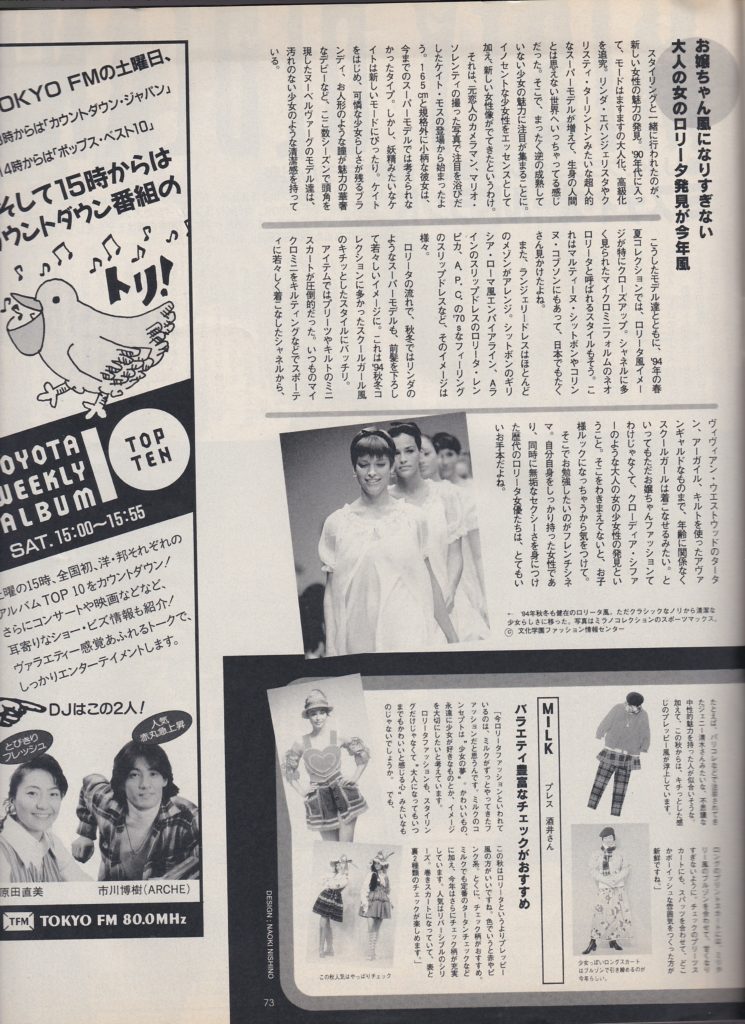
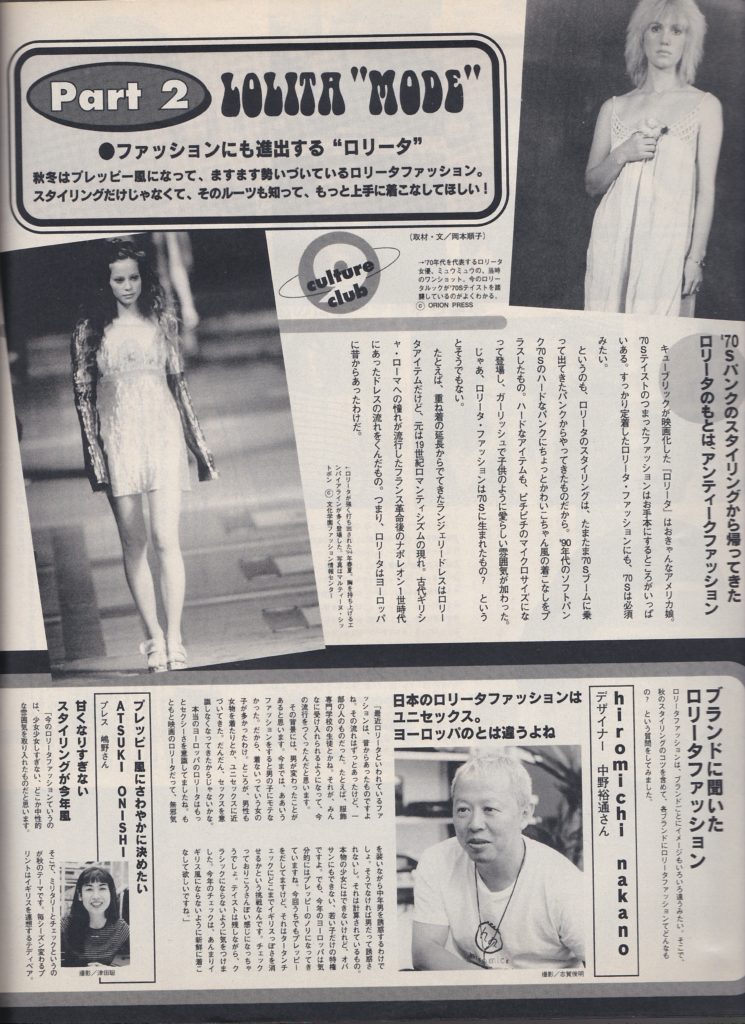
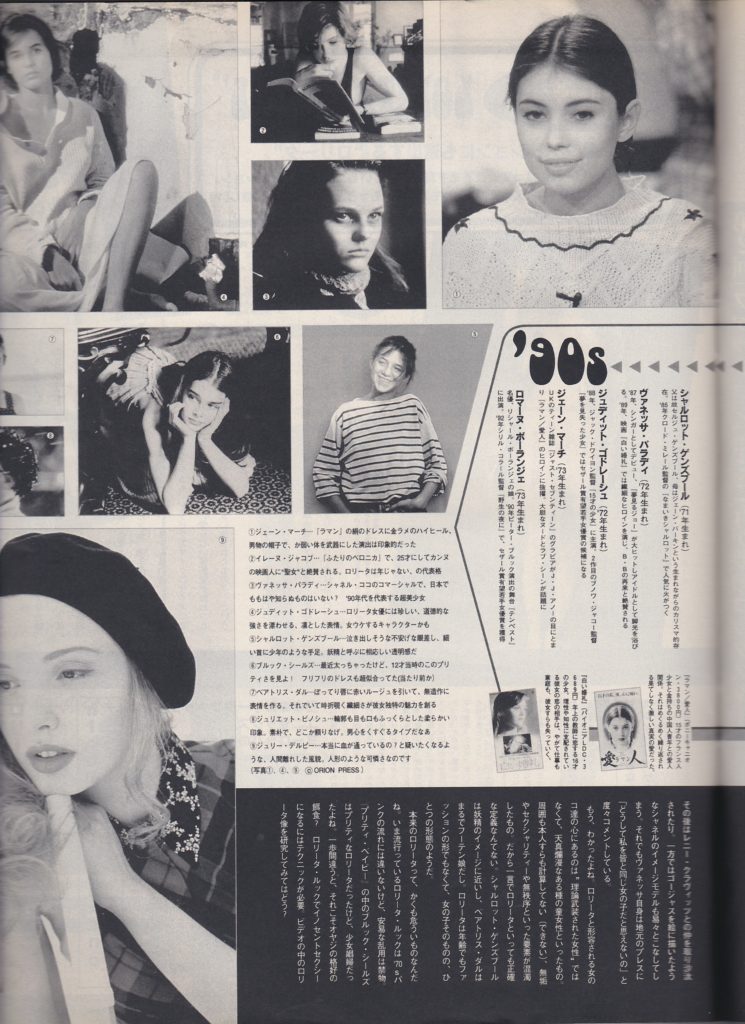
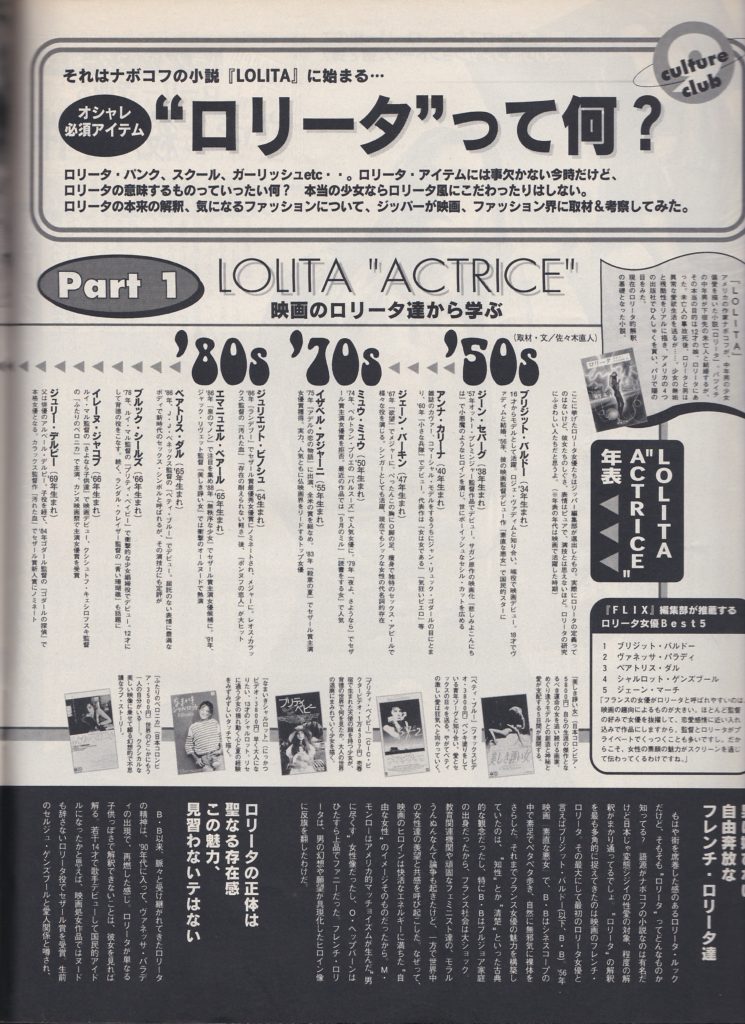
I also realize this article is going to be very controversial… don’t shoot the messenger, please?

それはナボコフの小説「lolita」に始まる…
It begins with Nabokov’s novel “lolita”…
オシャレ必須アイテム
Fashionable must-haves
ロリータ”って何?
What is “Lolita”
ロリータ・パンク,スクール,ガーリツシュetc・・。ロリータ・アイテムにほ事欠かない今時だけど,
Lolita・punk, school, girlish etc… Nowadays there is no shortage of lolita items,
ロリータの意味するものっていったい何?本当の少女ならロリータ風にこだわったりはしない。
What does Lolita mean? Real girls aren’t that hung up about it (???)
ロリータの本来の解祝、気になるファッションについて、ジッパーが映画、ファッション界に取材&考察してみた。
Zipper interviewed the movie and the fashion world about Lolita’s original celebration and fashion.

Part 1: LOLITA “ACTRICE”
映画のロリータ達から学
Learning from the Movie Lolita


ちのしぐさ、表情はピュアで、演技とは思えないほど。
Her gesture, her expression is pure, and she doesn’t seem to be acting.
ロリータの研究 にふさわしい人たちだと思うよ。
I think she’s the right person to study for Lolita.
(※年表の年代は映画で活躍した時期)
(*The table is sorted chronologically based on the time when the actress was active in movies)
’50s
ブリジット・バル ドー(’34年生まれ)
Brigitte Bardot (born ’34)
16才からモデルとして活躍。ロジェ.ヴァディムと知り合い、端役で映画デビュー。18才でヴ ァディムと結婚 ’56年, 彼の映画監督デビュー作 「素直な悪女」で国民的スターに
Active as a model from the age of 16, she met Rodger Vadim and made her debut in the movies. When she turned 18 in ’56, she married Vadim and became a national star after staring in his film director debut “And God Created Woman“
ジーン・セバーグ (’38年生まれ)
Jean Seberg (born ’38)
’57年オットー・プレミンジャ—監督作品でデビュー。サガン原作の映画化『悲しみよこんにち は』で小悪魔のよぅなヒロインを演じ、世にボーイッシュなセシル.カットを広める
She made her film debut in ’57 after being selected by director Otto Preminger. He later cast her in the film “Bonjour Tristesse” where she played the devilish heroine Cécile and popularized the tomboyish Cécile haircut.
アンナ・カリーナ(’40年生まれ)
Anna Karina (born ’40)
雑誌のカヴァー,コマーシャル・モルをするうちにジャン・リュック・ゴダールの目にとまい,’60 年”小さな兵隊”でデビュー。代表作は”女は女である””気狂いピエロ”等
She caught the eye of Jean-Luc Godard while doing magazine covers and commercials and debuted in 1960 with “The Little Soldier”. Her masterpieces are “A woman is a woman”, “Pierrot le Fou“, and more.
ジェーン・バーキン (’47年生まれ)
Jane Birkin (born ’47)
’67 年”欲望”でメジャーに。ぺつたんこの胸にO健の足,痩身で独特のセツクス・アピールで様々な役を演じる。シンガーとしても活躍,現在でもシックな女性の代名詞的仮在
In ’67, she became a major player with “blowup“. Flat-chested, she plays various roles with her slim and unique sex appeal. She also worked as a singer and is still synonymous with chic women.


’70s
ミユウ ・ ミユウ(50年生まれ)
Miou-Miou (born ’50)
74年、ベルトラン•プリエの『バルスーズ』で人気女優に。’79年『夜ょ,さょぅなら』でセザ ール賞主演女優賞を拒否。最近の作品では『5月のミル』『読害をする女』で人気
In 1974, she got her big break in Bertrand Blier’s “Going Places”. She was awarded the Cesar Award for Best Actress in 1979 for “Memoirs of a French Whore”. Her recent popular works include “May Fools” and “The Reader”.
イザベル・ アジャーニ(’55年生まれ)
Isabelle Adjani (born ’55)
75年『アデルの恋の物語』に出演、全米の賞を総なめ。’83年『殺意の夏』でセザール賞主演 女優賞獲得。実力, 人気ともに仏映画界をリードするトップ女優
She appeared in “The Story of Adèle H.” in 1975 and swept the national awards. She won the Cesar Award for Best Actress in 1983 for “One Deadly Summer”. A top actress who leads the French movie world in both ability and popularity.
’80s
ジュリエット ・ ビノシュ (’64生まれ)
Juliette Binoche (born ’64)
’86年『ランデブー』でセザール賞最優秀女優賞にノミネ—卜され、メジャーに。レオス•カラッ クス監督の『汚れた血』『存在の耐えられない軽さ』後、『ポンヌフの恋人』が大ヒット
In 1986, she was nominated for the Cesar Award for Best Actress in “Rendez-vous” and became a major player. Under director Leos Carax she stared in “Mauvais Sang” and “Unbearable Lightness of Being”, and then “The Lovers on the Bridge” and became a big hit.
エマニュエル・ベア—ル(65年生まれ)
Emmanuelle Béart (born 1965) wikipedia says 1963
’86年『泉のマノン』で注目を集め,88年『無秩序な少女』でセザール賞主演女優候補に。 ’91年 、 ジャック,リヴ1ット監督『美しき諍い女』では衝擊のオールヌードで熱演
In 1986, she attracted attention with “Manon des Sources“, and in 1988, she was nominated for leading actress at the Cesar Awards with “Les enfants du désordre“. In 1991, she enthusiastically performed fully nude in Jaques Rivette’s “The Beautiful Troublemaker“.
ベアトリス・ダル(65年生まれ)
Béatrice Dalle (born 1965) wikipedia says 1964
’86年、J.J.ベネックス監督の『ベティ・ブル—』でデビュー。屈託のない表情に豊满な ボディで新時代のセックス・シンボルと呼ばれるが’ その演技力にも定評が
in ’86 she debuted with “Betty Blue” directed by JJ Beineix. While she was called a sex symbol of the new era, with her carefree expression and rich body, she also had a good reputation for her acting ability.
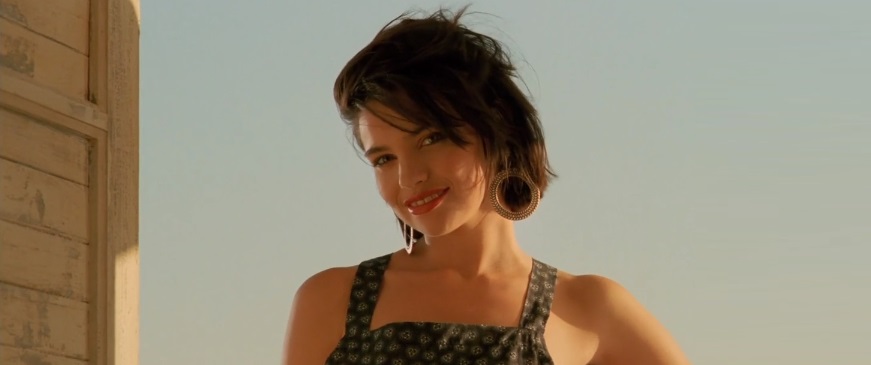
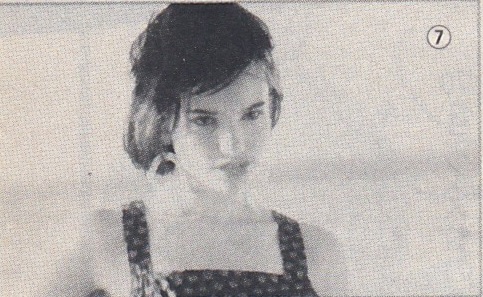
ブルック ・ シ—ルズ(’66年生まれ)
Brooke Shields (born ’66) wikipedia says 1965
78年、ルイ・マル監督の「プリティ・ベイビー」で衝撃的な少女娼婦役でデビュー。12才に して背徳の役をこなす。 続く、 ランダル・クレイザー監督の「青い珊瑚礁」も話題に
In 1978, she made her debut in Louis Malle’s “Pretty Baby” where she had the shocking role of a child prostitute. At the age of 12, she played this immoral role. She continued with “The Blue Lagoon” directed by Randall Kleiser.
イレーヌ・ジャコブ (66年生まれ)
Irène Jacob (born 1966)
ルイ・マル監督の「さよなら子供達」で映画デビュー、クシシュトフ・キェシロフスキ監督の 「ふたりのベロニカ」で主演、カンヌ映画祭で主演女優賞を受賞
She made her film debut in Louis Malle’s Goodbye Children and starred in Krzysztof Kieślowski’s Two Veronicas, winning Best Actress at the Cannes Film Festival.
ジュリー・デルピー (69年生まれ)
Julie Delpy (born 1969)
父は俳優のアルベール・デルピー。子役を経て、86年ゴダール監督の「ゴダールの探偵」で 本格女優となる。カラックス監督作「汚れた血」でセザール賞新人賞にノミネート
His father is actor Albert Delpy. After working as a child actress, she became a full-fledged actress in Godard’s Detective in 1986. She was nominated for a César Award for Best Newcomer for Carax’s “Dirty Blood.”


’90s
シャルロット・ゲンズブール (71年生まれ)
Charlotte Gainsbourg (born 1971)
父は故セルジュ・ゲンズブール、母はジェーン・バーキンという生まれながらのカリスマ的存 在。85年クロード・ミレール監督の「なまいきシャルロット」で人気に火がつく
A charismatic figure from birth, her father is the late Serge Gainsbourg and her mother Jane Birkin. In 1985, she became popular after her role in Claude Miller’s ‘An Impudent Girl‘.
ヴァネッサ・パラディ (72年生まれ)
Vanessa Paradis (born 1972)
87年、シンガーとしてデビュー、「夢見るジョー」が大ヒットしアイドルとして脚光を浴び る。89年、映画「白い婚礼」では繊細なヒロインを演じ、B・Bの再来と絶賛される
She made her debut as a singer in 1987, and “Joe Le Taxi” became a big hit and she came into the limelight as an idol. In 1989, she played a delicate heroine in the movie “Noce Blanche”, and she was acclaimed as the second coming of B.B.


ジュディット・ゴドレーシュ(72年生まれ)
Judith Godreche (born 1972)
’88年、ジャック・ドワイヨン監督「15才の少女」に主演。2作目のブノワ・ジャコー監督 「夢を見失った少女」ではセザール賞有望若手女優賞の候補になる
In 1988, she starred in Jacques Doillon’s “15-Year-Old Girl”. Her second film, directed by Benoît Jacot, was nominated for a César Award for Promising Young Actress.


ジェーン・マーチ (73年生まれ)
Jane March (born 1973)
UKのティーン雑誌 「ジャスト・セブンティーン」のグラビアがJ・J・アノーの目にとま り「ラマン/愛人」のヒロインに抜擢。大胆なヌードとラブ・シーンが話題に
Her gravure for the UK teen magazine “Just Seventeen” caught the eye of JJ Arno, and she was selected as the heroine of “l’amant/Mistress”. Her daring nudity and love scenes make her the talk of the town


(Raine’s note: I can not stress enough how uncomfortable I am with this content right now)
ロマーヌ・ボーランジェ (’73年生まれ)
Romane Bohringer (born in ’73)
名優、リシャール・ボーランジェの娘。90年ピーター・ブルック演出の舞台「テンペスト」 に出演。92年シリル・コラール監督「野生の夜に」で、セザール賞有望若手女優賞を獲得
She is the daughter of the famous actor Richard Bohringer. In 1990 she starred in the Peter Brook-directed stage play The Tempest. In 1992 she won the César Award for Promising Young Actress for her role in Cyril Corrard’s “Savage Nights“.
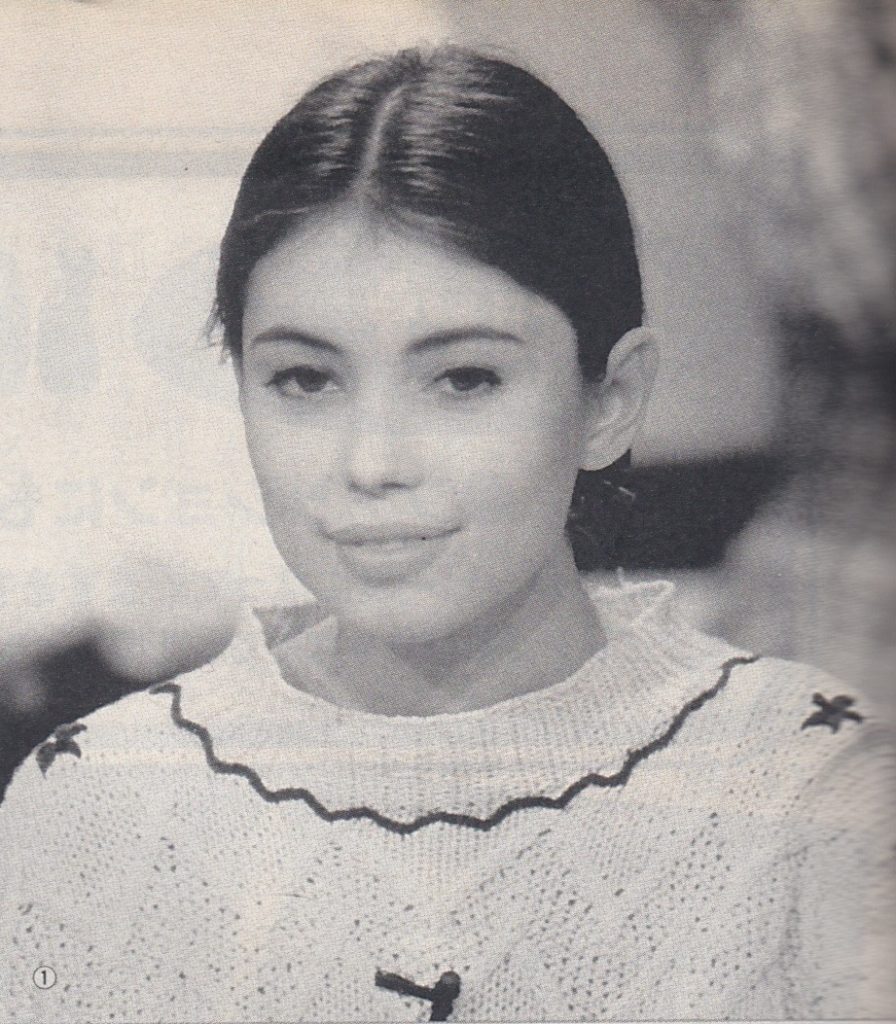
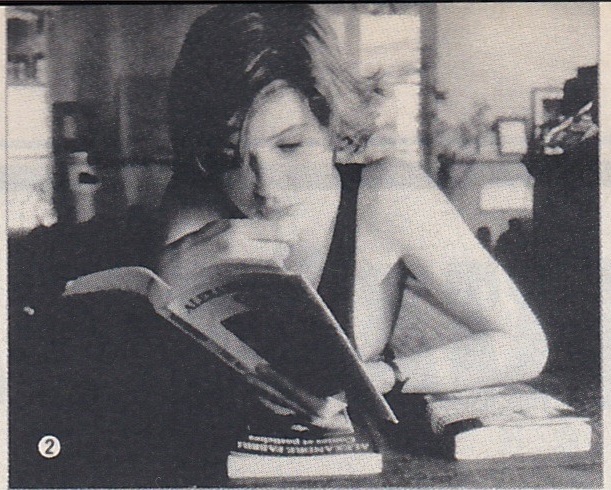
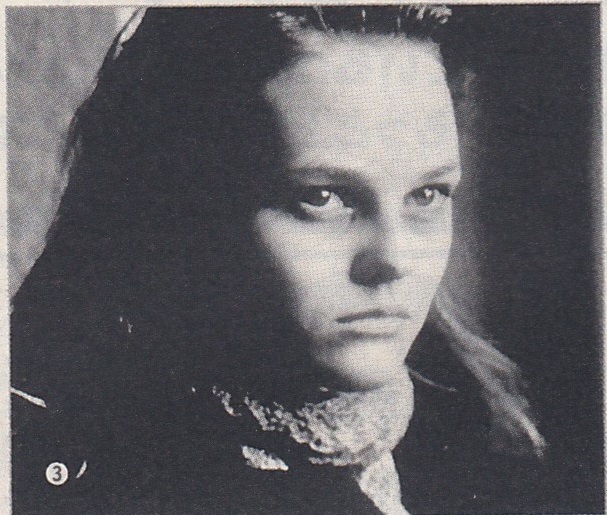
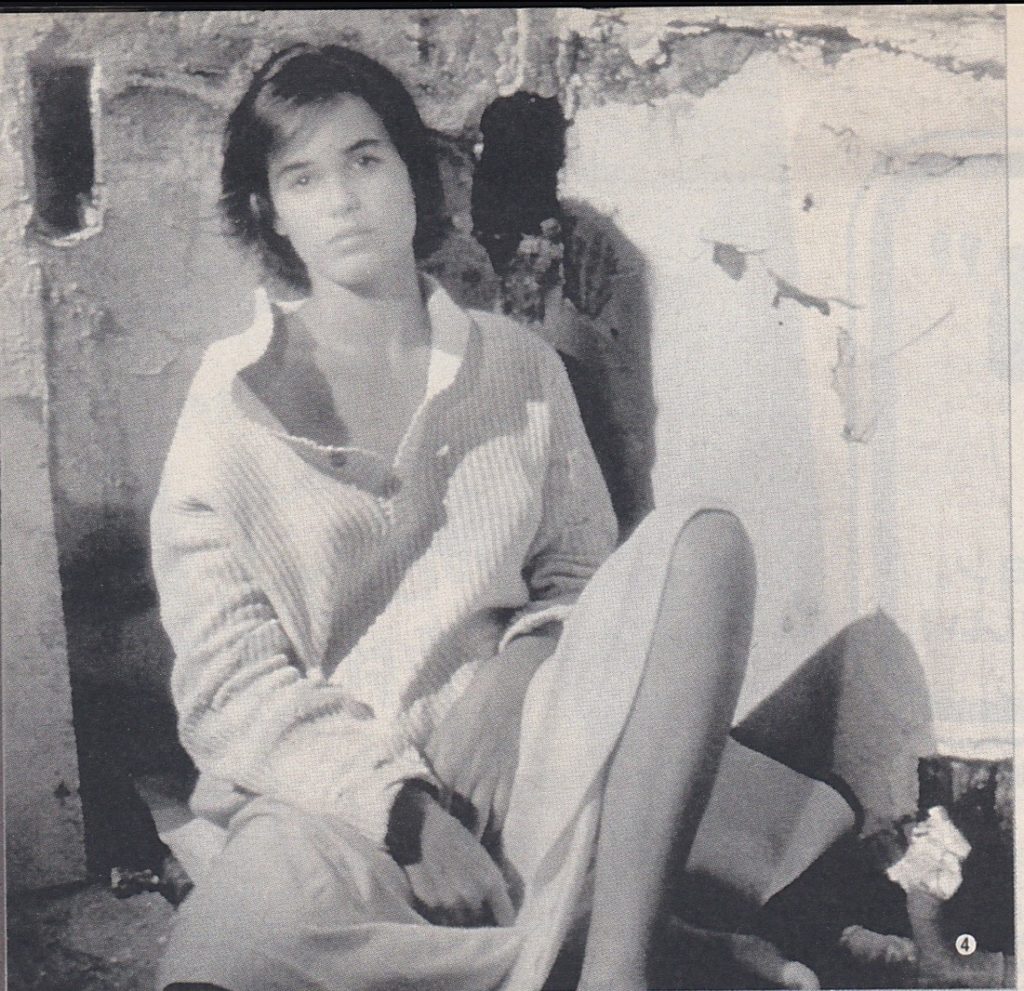
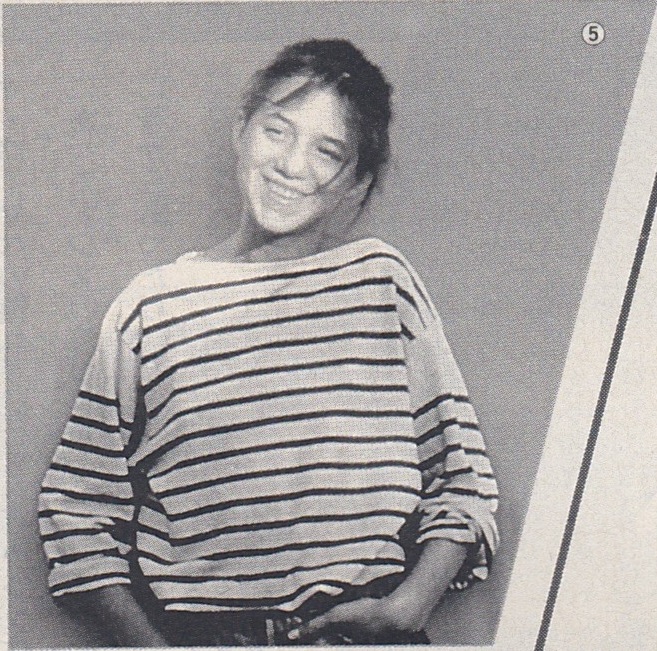
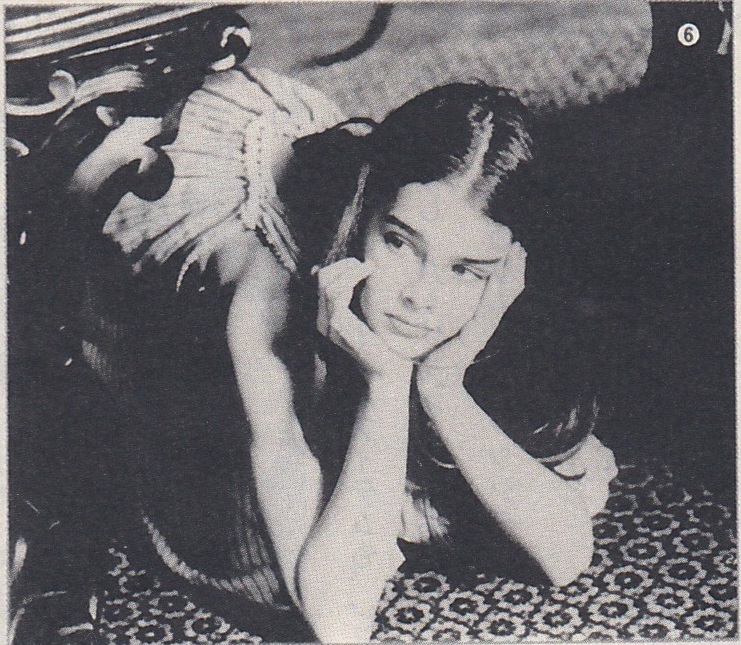
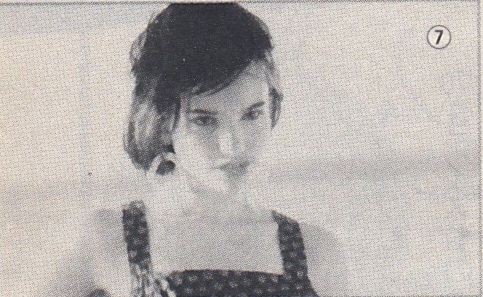
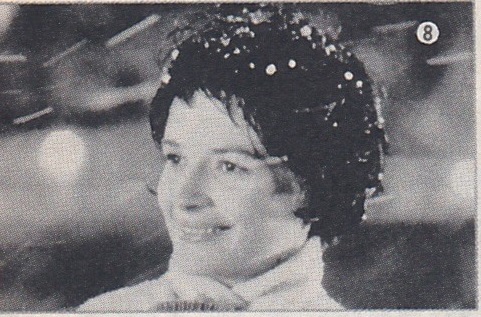
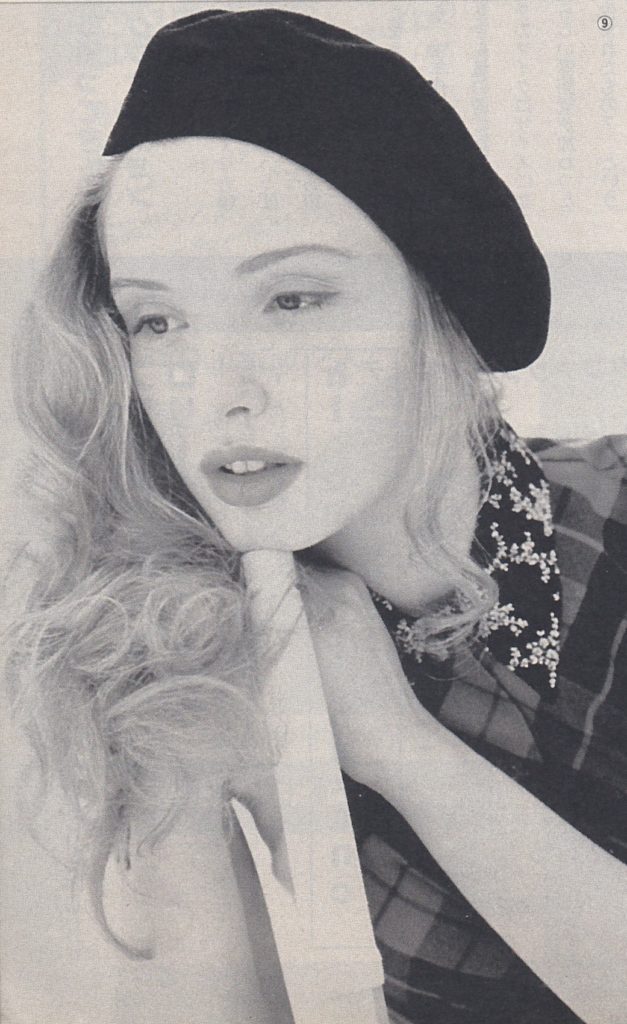
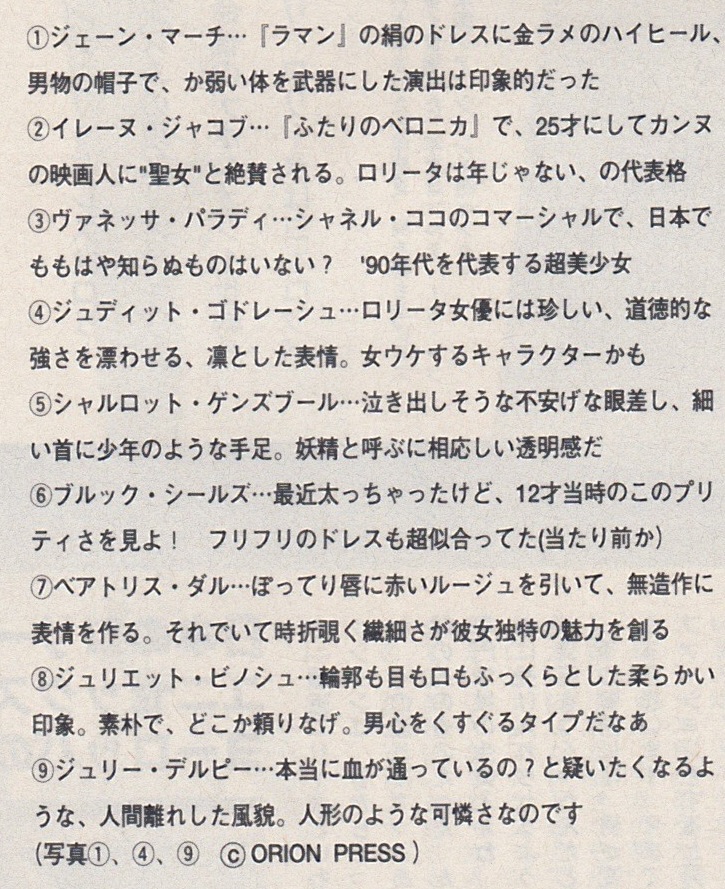
① ジェーン・マーチ・・・「ラマン」の絹のドレスに金ラメのハイヒール、男物の帽子で、か弱い体を武器にした演出は印象的だった
① Jane March ・・・ “l’amant”. The silk dress, gold lame high heels, and man’s hat, and the performance that used her fragile body as a weapon was impressive.
② イレーヌ・ジャコブ・・・「ふたりのベロニカ」 で、25才にしてカンヌ の映画人に“聖女と絶賛される。 ロリータは年じゃない、 の代表格
② Irène Jacob … “Futari no Veronica”. At the age of 25, she was praised as a saint by a Cannes filmmaker.
③ ヴァネッサ・パラディ・シャネル・ココのコマーシャルで、 日本で ももはや知らぬものはいない? ’90年代を代表する超美少女
③ Vanessa Paradis: A commercial for Coco Chanel. Is there anyone in Japan who doesn’t know her? A super beautiful girl representing the 90s
④ジュディット ゴドレーシュ・・・ロリータ女優には珍しい、道徳的な 強さを漂わせる、凛とした表情。 女ウケするキャラクターかも
④ Judith’s Godreche… A dignified expression that exudes moral strength, which is rare for Lolita actresses. She might be a character that appeals to women
⑤ シャルロット・ゲンズブール・・・泣き出しそうな不安げな眼差し、細 い首に少年のような手足。 妖精と呼ぶに相応しい透明感だ
⑤ Charlotte Gainsbourg … An uneasy look that makes you want to cry, her slender neck and boyish limbs. She’s slight enough to be called a fairy
⑥ ブルック・シールズ… 最近太っちゃったけど、12才当時のこのプリ ティさを見よ! フリフリのドレスも超似合ってた (当たり前か)
⑥ Brooke Shields… She’s gained a lot of weight lately. Look at this prettyness at the age of 12! The frilly dress also looked great (Is it natural?)
⑦ベアトリス・ダル… ぽってり唇に赤いルージュを引いて、 無造作に 表情を作る。 それでいて時折覗く繊細さが彼女独特の魅力を創る
⑦ Beatrice Dal… Draw red rouge on your plump lips to create a casual expression. Yet her delicacy that she occasionally peeks at creates her unique charm.
⑧ ジュリエット・ビノシュ・・・輪郭も目も口もふっくらとした柔らかい 印象。 素朴で、 どこか頼りなげ。 男心をくすぐるタイプだなあ
⑧ Juliette Binoche ・・・ Soft impression with plump contours, eyes and mouth. Simple and somewhat dependable. You’re the type that tickles men’s hearts
⑨ ジュリー・デルピー・・・本当に血が通っているの? と疑いたくなるよ うな、 人間離れした風貌。 人形のような可憐さなのです
⑨ Julie Delpy…Are you really flesh and blood? She has such an inhuman appearance, it makes me want to doubt it. She’s cute like a doll
(写真① ④ ⑤ ⑥ ORION PRESS) / (Picture ① ④ ⑤ ⑥ ORION PRESS)


I believe this is just movie covers and synopsis of some of the above movies and how much they cost to buy on VHS at the time. I’m not translating that part, sorry!


男に媚びない、自由奔放なフレンチ・ロリータ達
Free-Spirited French Lolita Don’t Flirt With Men
もはや街を席巻した感のあるロリータ・ルック だけど、そもそも“ロリータ”ってどんなものか 知ってる?
The Lolita look has already taken the city by storm, but do you know what “Lolita” really is?
語源がナボコフの小説なのは有名だ けど日本じゃ変態ジジイの性愛の対象、程度の解 釈がまかり通ってるでしょ。
It’s famous that the etymology is Nabokov’s novel, but in Japan, the interpretation of her as a perverted old man’s sexual object is okay. (???)
“ロリータ” の解釈 を最も多角的に捉えてきたのは映画のフレンチ・ ロリータ。
French Lolita in movies has captured the most multifaceted interpretation of “Lolita.”
その最大にして最初のロリータ女優と 言えばブリジット・バルドー以下、B・B)。
The biggest and first Lolita actress is Brigitte Bardot, BB).
’56年 映画 素直な悪女』で、B・Bはシネスコープの 中で素足でペタペタ歩き、自然に無邪気に裸体を さらした。
In the 1956 film The Obedient Villain, BB walked barefoot in the Cinescope, naturally innocently exposing her naked body.
それまでフランス女優の魅力を構築し ていたのは、知性”とか”清楚”といった古典 的な観念だったし、特にB・Bはブルジョア家庭 の出身だったから、フランス社会は大ショック。
Up until then, the charm of French actresses had been based on classical notions such as “intelligence” and “cleanliness,” and especially since BB came from a bourgeois family, French society was shocked.
教育関連機関や頑固なフェミニスト達の、モラル うんぬんなんて論争も起きたけど、一方で世界中 の女性達の羨望と共感を呼び起こした。
While there was some controversy over morals among educational institutions and stubborn feminists, it also aroused the envy and sympathy of women around the world.
なぜって、 映画のヒロインは快活なエネルギーに満ちた 自 由な女性のイメージそのものだったから。
Because the movie’s heroine was the very image of a free woman full of lively energy.
M・ モンローはアメリカ的マッチョイズムが生んだ男 に尽くす女性像だったし、 ・ヘップバーンは ひたすら上品でファニーだった。
M. Monroe was a female figure born from American machoism, and Hepburn was purely elegant and funny.
フレンチ・ロリ ータは、男の幻想や願望が具現化したヒロイン像 に反旗を翻したわけだ。
French Lolita rebelled against the images of heroines who embody men’s fantasies and desires.
ロリータの正体は聖なる存在感この魅力見習わないテはない
Lolita’s true identity is a sacred presence. There is no one who can’t imitate this charm
B・B以来、脈々と受け継がれてきたロリータ の精神は、90年代に入って、ヴァネッサ・パラデ ィの出現で、再燃した感じ。
The spirit of Lolita, which has been handed down since B.B., was reignited in the 90’s with the appearance of Vanessa Paradis.
ロリータが単なる 子供っぽさで解釈できないことは、彼女を見れば 解る。
You can see from her that Lolita cannot be interpreted as mere childishness.
若干14才で歌手デビューして国民的アイド ルになったかと思えば、映画処女作品ではヌード も辞さないロリータ役でセザール賞を受賞。
At the age of 14, she made her debut as a singer and became a national idol, and in her maiden film, she won the Cesar Award for playing the role of a Lolita, who does not hesitate to go nude.
生前 のセルジュ・ゲンズブールと愛人関係と噂され、その後はレニー・クラヴィッツとの仲を取りそえされたり。
She was rumored to be in a mistress relationship with Serge Gainsbourg during his lifetime, and then later dated Lenny Kravitz.
一方ではゴージャスを絵に描いたよう なシャネルのイメージモデルも易々とこなしてし まう。
On the other hand, she can easily handle being an image model for Chanel, where she looks like a picture of gorgeousness.
それでもヴァネッサ自身は地元のプレスに 「どうして私を皆と同じ女の子だと思えないの」と度々コメントしている。
Still, Vanessa herself often commented to her local press, “Why can’t you see me as the same girl as everyone else?”
もう、わかったよね。
I understand now.
ロリータと形容される女の コ達の心にあるのは,理論武装された女性」では なくて、天真爛漫なある種の童女性といったもの。
In the hearts of women who are described as Lolita, she is not a “woman armed with theories”, but a kind of naïve and childish woman.
周囲も本人すらも計算してない(できない)、無垢 やセクシャリティーや無秩序といった要素が混濁 したもの。
It is a turbidity of elements such as innocence, sexuality, and disorder that neither the surroundings nor the person themselves can (cannot) calculate.
だから一言でロリータといっても正確 な定義なんてない。
Therefore, there is no precise definition for Lolita.
シャルロット・ゲンズブール は妖精のイメージに近いし、ベアトリス・ダルは まるでフーテン娘だし。
Charlotte Gainsbourg is close to the image of a fairy, and Beatrice Dal is like a Futen girl (???).
ロリータは年齢でもファ ッションの形でもなくて、女の子そのものの、ひ とつの形態のようだ。
Lolita is neither defined by an age nor a type of fashion, it seems to be an aspect of the girl herself.
本来のロリータって、かくも危ういものなんだ ね。
The original Lolita is such a dangerous thing, isn’t it?
いま流行っているロリータ・ルックは70sパ ンクの流れには違いないけど、安易な乱用は禁物。
The Lolita look that is currently in vogue is definitely part of the 70s punk trend, but don’t abuse it too easily.
『プリティ・ベイビー』の中のブルック・シールズ はプリティなロリータだったけど、少女娼婦だっ たよね。
Brooke Shields in Pretty Baby was a pretty Lolita, but she was a prostitute.
一歩間違うと、それこそオヤジの格好の 餌食? ロリータ・ルックでイノセントセクシー になるにはテクニックが必要。
If you make a mistake, you’ll be the perfect prey for the old man?
ビデオの中のロリータ像を研究してみてはどう?
How about studying the image of lolita in the videos?
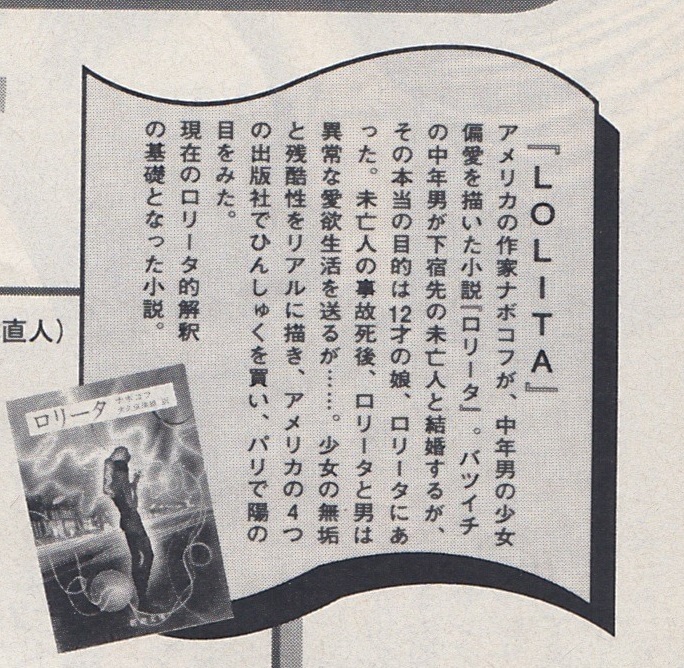
「LOLITA」
アメリカの作家ナボコフが、中年男の少女 偏愛を描いた小説「ロリータ」。
The novel “Lolita” by American writer Nabokov depicts a middle-aged man’s predilection for a girl.
バツイチ の中年男が下宿先の未亡人と結婚するが、 その本当の目的は12才の娘、ロリータにあ った。
A divorced middle-aged man marries the widow of his boarding house, but the real purpose of the marriage is to get access to her 12-year-old daughter, Lolita.
未亡人の事故死後、ロリータと男は 異常な愛欲生活を送るが・・・・・・。
After the death of her widow in an accident, Lolita and a man lead an abnormal lustful life…
少女の無垢 と残酷性をリアルに描き、アメリカの4つ の出版社でひんしゅくを買い、パリで陽の 目をみた。
Depicting the innocence and cruelty of a young girl in a realistic manner, it was rejected by four American publishers and only saw the light of day in Paris.

『FLIX』編集部が推薦する ロリータ女優Best5
Top 5 lolita actresses recommended by FLIX editorial department
- Bridgette Bardot
- Vanessa Paradis
- Béatrice Dalle
- Charlotte Gainsbourg
- Jane March
「フランスの女優がロリータと呼ばれやすいのは、映画の趣向によるものが大きい。ほとんど監督 の好みで女優を抜擢して、 恋愛感情に近い入れ 込みで作品にしますから。監督とロリータがプ ライベートでくっつくことも多いですし。 だか らこそ、女性の素顔の魅力がスクリーンを通じて伝わってくるわけですね。」
“French actresses are often called Lolita because of the style of the movies. The actresses are selected mostly according to the director’s taste, and the work is made with a feeling close to romance. There are many times when the director and Lolita get together at a private party. But she is the one who can convey the charm of a woman’s true face through the screen. “
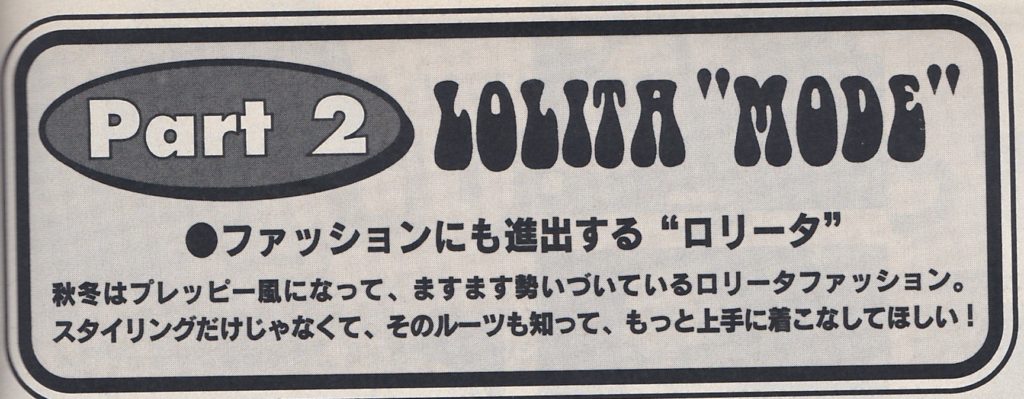
Part 2: Lolita Mode
●ファッションにも進出する “ロリータ”
●“Lolita” is making inroads into fashion
冬はプレッピー風になって、ますます勢いづいているロリータファッション。
Lolita fashion is becoming more and more popular in the winter as it becomes more preppy.
スタイリングだけじゃなくて、そのルーツも知って、もっと上手に着こなしてほしい!
I want you to know not only the styling, but also the roots, and wear it better!
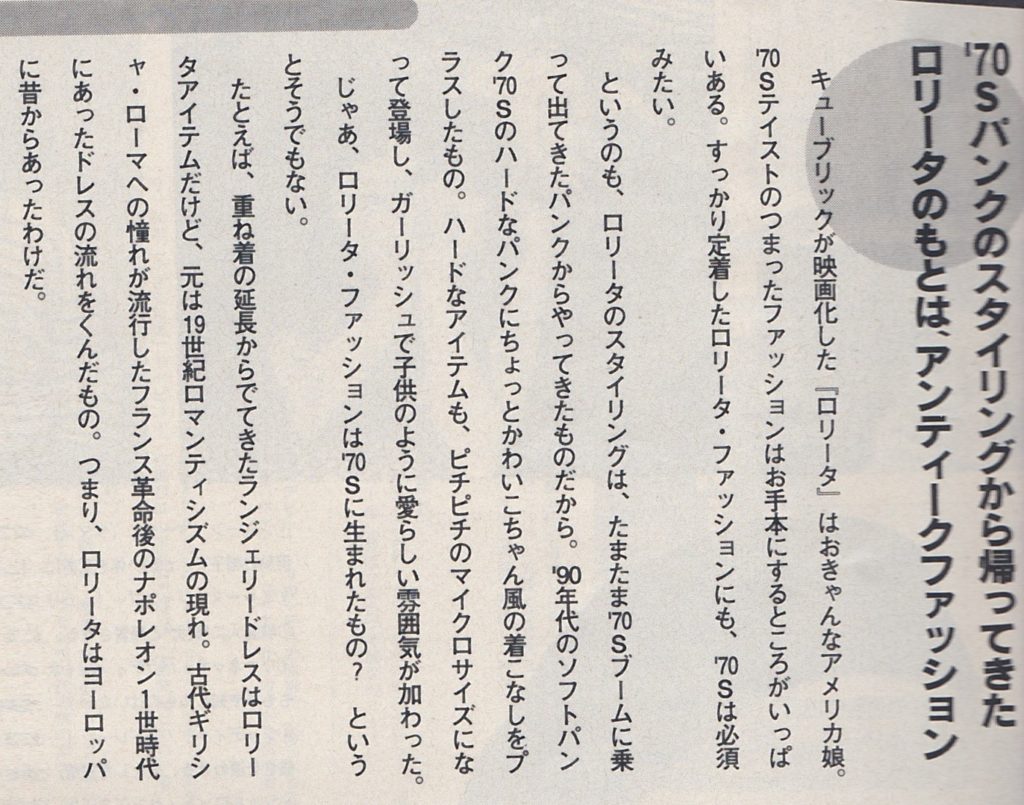
’70sパンクのスタイリングから帰つてきた ロリータのもとは, アンテイークフアツシヨン
The origin of lolita is antique (vintage?) fashion brought back into style by ’70s punk styling
キユーブリックが映画化した『ロリータ 』 はおきやんなアメリカ娘。 ’70Sテイストのつまったフアツシヨンはお手本にするところがいっぱ いある。すっかり足着したロリータ.フアッシヨンにも、’70sは必須 みたい。
In Kubrick’s movie, “Lolita” is a nice American girl. She has a lot of ’70s-style fashion that she can use as a model. The ’70s seems to be essential even for Lolita Fashion that has completely settled down (settled down = solidified into something not punk?).
というのも、ロリータのスタイリングは、たまたま70sブームに乗 って出てきたパンクからやってきたものだから。’90sのソフトパン ク70sのハードなパンクにちょっとかわいこちやん風の着こなしをブ ラスしたもの。ハードなアイテムも、ピチピチのマイクロサイズにな って登場し、ガーリッシュで子供のょうに愛らしい1謹気が加わった。
This is because Lolita styling happened to come from punk, which came out of the 70s boom. The soft punk of the 90’s and the hard punk of the 70’s combined with a little cutesy style. Hard items also appeared in micro-sizes, adding a girlish and child-like charm.
じゃあ、ロリータ•フアツシヨンは70Sに生まれたもの?という とそうでもない。
So, Lolita Fashion was born in the 70s? That’s not what I’m saying.
たとえば、重ね着の延長からでてきたランジェリードレスはロリー タアイテムだけど、元は19世紀ロマンティシズムの現れ。古代ギリシャ・ローマへの憧れが流行したフランス革命後のナポレオンー世時代 にあったドレスの流れをくんだもの。つまり、ロリー タはヨーロッバ に昔からあったわけだ。
For example, the lingerie dress, which is an extension of layering, is a Lolita item, but it was originally a manifestation of 19th-century romanticism. It is a descendant of a dresses that existed in the post-French Revolution Napoleonic era, when admiration for ancient Greece and Rome became popular. In other words, Lolita has existed in Europe for a long time.
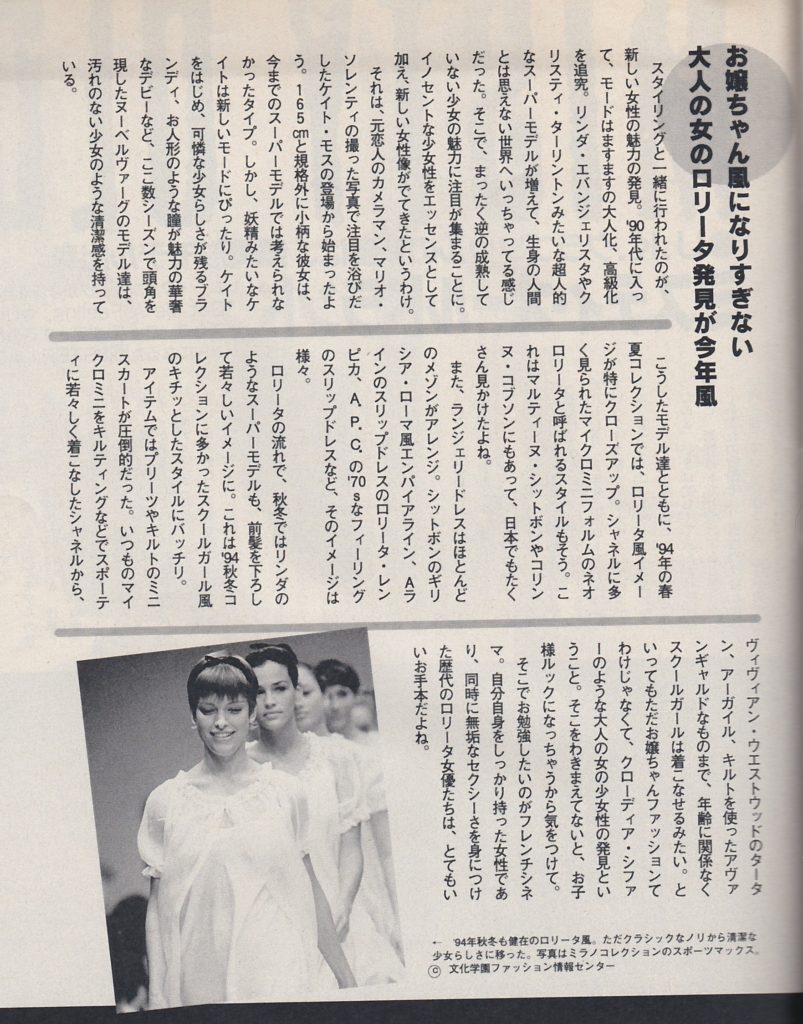
お嫌ちやん風になりすぎない 大人の女のロリータ発見が今年風
The discovery of an adult woman’s Lolita that doesn’t become too disagreeable is this year’s style (?)
スタイリングと| 緒に行われたのが’ 新しい女性の魅力の発見. 90手代に入っ て, モードはますますの大人化、高級化 を追究。リンダ ・エバンジェリスタやク リスティ・夕—リントンみたいな超人的 なスーパ—モデルが増えて、生身の人間 とは思えない世界へいつちやってる感じ だった。そこで, まったく逆の成熟して いない少女の魅力に注目が集まることに。 イ ノセントな少女性をエツセンスとして 加え、新しい女性像がでてきたというわけ。
On Styling | The beginning was the discovery of the charm of a new (young) woman. In the 90s, the chic thing is the pursuit of mature/adult and high-class things. With more superhuman supermodels like Linda Evangelista and Christie Evening-Lynton, It feels like we are entering a world where the ideal doesn’t seem like a living human being. Therefore, attention is focused on the charm of a girl who is the opposite of this mature ideal.
それは、元恋人のカメラマン、マリオ・ソレンテイの撮った写真で注目を浴びだしたケイト・モスの登場から始まったよう。165cmと規格外に小柄な彼女は、 今までのスーパ—モデルでは考えられな かつたタイプ。しかし、妖精みたいなケイトは新しいモードにぴったり。ケイトをはじめ、可憐な少女らしさが残るブランディ、お人形のような瞳が魅力の華奢なデビ—など、ここ数シ—ズンで頭角を現したヌーベルヴアーグのモデル達は、 汚れのない少女のような
清潔感を持って いる。
It seems that it started with the appearance of Kate Moss, who got a lot of attention due to the photographs taken by former lover, and photographer, Mario Solentei. She is 165 cm, which in the past has been considered unthinkably petite for a super model. However, Kate like a fairy, is perfect for the new mode. Kate, Brandy (who has a pretty girlishness), and Devi (who has doll-like eyes), are the models of the Nouvelle Vogue who have emerged in the last few seasons and have a sense of freshness.
こうしたモデル達とともに, ’94年の春 夏コレクシヨンでは、ロリータ風イメージが特にクローズアップ。シャネルに多く見られたマイクロミニフオルムのネオ ロリータと呼ばれるスタイルもそう。これはマルティーヌ・シットボンやコリンヌ・コブソンにもあって、日本でもたくさん見かけたよね。
Along with these models, the image of lolita style was especially popular in the Spring / Summer 1994 collections. So is the style called Neo Lolita, which is like the micro mini skirt suit that is often seen in Chanel. This is also seen a lot in Martine Sitbon and Corinne Cobson in Japan. (?)
また、ランジェリードレスはほとんど歴代のメゾンがアレンジ。シットボンのギリ シア・ローマ風エンパイアライン、Aラ インのスリップドレスのロリータ・レン ピカ、A. P.C.の70sなフィーリング のスリップドレスなど、そのイメージは 様々。
Also, lingerie dresses are arranged by most fashion houses. There are various images such as the Greek-Roman empire line of Martine Sitbon, the A-line slip dress of Lolita Lempicka, and the 70s-feeling slip dress of A.P.C.
ロリータの流れで、秋冬ではリンダの ようなスーパーモデルも、前髪を下ろし て若々しいイメージに。これは94秋冬コ レクションに多かったスクールガール風 のキチッとしたスタイルにバッチリ。 アイテムではプリーツやキルトのミニ スカートが圧倒的だった。いつものマイ クロミニをキルティングなどでスポーテ ィに若々しく着こなしたシャネルから、ヴィヴィアン・ウエストウッドのタータ ン、アーガイル、キルトを使ったアヴァ ンギャルドなものまで、年齢に関係なく スクールガールは着こなせるみたい。と いってもただお嬢ちゃんファッションて わけじゃなくて、クローディア・シファ のような大人の女の少女性の発見とい うこと。そこをわきまえてないと、お子様 ルックになっちゃうから気をつけて。
With the Lolita trend, even supermodels like Linda wear their bangs down for a youthful look in autumn and winter. This is perfect for the school girl style that was often seen in her 1994 autumn/winter collection. In terms of items, pleats and quilted mini-girlfriend skirts were overwhelming. From Chanel wearing her usual black mini with quilting and other sporty youthfulness, to Vivienne Westwood’s Avant Garde stuff with tartan, argyle, and kilts, it seems that a school girl look can be achieved regardless of age. She says that it is not just a young lady’s fashion, but a discovery of the girlhood of an adult woman like Claudia Schiffer. If you don’t understand that, you’ll end up looking like a child, so be careful.
Photo Caption
94年秋冬も健在のロリータ風。ただクラシックなリから清潔な 少女らしさに移った。写真はミラノコレクションのスポーツマックス。 © 文化学園ファッション情報センター
The Lolita style is still alive in the fall and winter of 1994. She just moved from classic to clean girlishness. The photo is Sport Max from the Milan Collection. © Bunka Gakuen Fashion Information Center


ブランドに聞いた ロリータフアツシヨン
Asking the Lolita Fashion Brands
ロリータフアツシヨンは、ブランドごとにイメ—ジもいろいろ違ぅみたい。
Lolita fashion seems to have different images depending on the brand.
そこで、 秋のスタイリングのコツを含めて, 各ブランドにロリ—タフアツシヨンてどんなも の?
So, what’s the difference between each brand, and what are some tips for autumn styling?
といぅ質問をしてみました。
I asked them these questions.
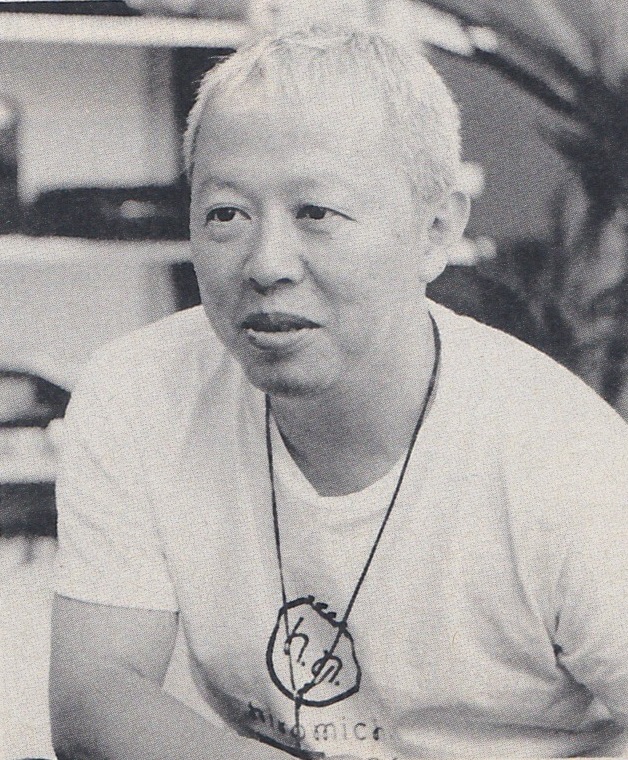
hiromichi nakano
デザイナ—中野裕通さん
Designer: Nakano Hiromichi-San
日本のロリータファッションは ユニセックス。 ヨーロッパのとは違うよね
Lolita fashion in Japan is unisex. This is different from that of Europe.
「最近ロリータといわれているフアッションは, 昔からあったものですよ ね。
The fashion people call “lolita” these days has been around for a long time.
その流れはずっとあったけど,一 部の人のものだった。たとえば、服飾 専門学校の生徒とかね。
It’s been around for a while, but it was for certain people. For example, students at a fashion school.
それが、みん なに受け入れられるようになって, 今 の流行をつくったんだと思います。
I think that’s how it became accepted by everyone and created the current fashion.
その背景には、男が変わったことが あると思います。
In the background, I think men have changed.
今までは、ああいう フアッションをすると男の子にモテな かった。
Up until now, such fashions haven’t been popular with boys.
だから、着ないっていう女の 子が多かったわけ。
Therefore, there were many girls who wouldn’t wear it.
ところが、男性も 女物を着たりとか, ユニセックスに近 づいてきた。
However, it has become more unisex, with men also wearing women’s clothing.
だんだん、セックスを意 識しなくなつてきたからじやないかな。
I wonder if I’ve gradually stopped noticing gender?
本当のヨーロツパのロリータはもつ とセクシーさを意識してましたね。
A real European Lolita would have been sexier than her.
もともと映画のロリータだつて, 無邪気を装いながら中年男を誘惑するわけで しよ。
But she’s originally a movie Lolita, and she pretends to be innocent to seduce a middle-aged man.
そうでなければ男だつて誘惑されないし。それは計算されているもの。
Otherwise even a man would not be seduced by her. It’s calculated.
本物の少女にはできないけれど、 オバ サンにもできない、若い子だけの特権 ですよ。
A an actual girl-child can’t do it, nor can an auntie do it.
でも、今年のョーロッパは気 分的にはプレッピーのノリになつてきていますね。
However, lately, Europe has become more and more preppy.
今回うちでもプレッピー をだしてますけど、それはタータンチ エックにどこまでイギリスつぽさを消 せるかという挑戦なんです。
I’m making preppy style as well, but the challenge is how much Tartan Check can really be consumed.
チェックつておりこうさんぽい感じになっちゃうでしょ。
It will make you feel like a checker.
(aka a member of the boy band checkers that wore a lot of plaid)
テイストは残しながら、ク ラシックにならないように気をつけま した。
While keeping it tasteful, I try not to make my designs too classic.
今年のチェックは、あんまりイ ギリス風にならないように新鮮に着こ なして欲しいですね。」
For this year’s check, I want you to style it freshly so that it doesn’t look quite so English.
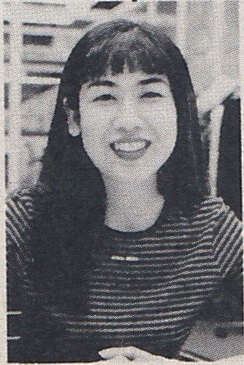
ATSUKI ONISHI
プレス鴆野さん
Media Relations: Kurono-San
プレッピー疆にさわやかに決めたい
I want to make preppy fresh
百くなりすぎない スタイリングが今年風
Not too many styles this year
「今のロリータフアツシヨンていぅの は、少女少女しすぎない、どこか中性的 な雰囲気を取り入れたものだと思います。
I think the current lolita aesthetic is somewhat neutral, it’s not too girly-girly.

It seems to be this year that a girly long skirt is tightened with a jacket.
たとえば、パリコレなどで注目されてき ジェニーさんみたいな、不思議な 中性的魅力を持った人が似合いそうな。
For example, someone with a mysterious androgynous charm like Jenny Shimizu, who has been attracting attention in Paris runway shows… it would suit her well.
加えて、この秋からは、キチっとした感 じのプレッピー風が浮上しています。
In addition, this fall has seen the emergence of a preppy style.
そこで、ミリタリーとチェックというの が秋のテーマです。
Therefore “military” and “check” (plaid/tartan) are this autumn’s themes.
毎シーズン変わるプ リントはィギリスを連想するテディべア。
The print, that changes every season, is a teddy bear that reminds us of England.
ロングのプリントスカートには、ミリタリー風のブルゾンを合わせて、甘くなりすぎないように。
The long printed skirt is paired with a military-inspired blouson to keep it from being too sweet.
チェックプリーツスカートにも、スパッツを合わせて、どこボーイッシュな雰囲気をつくった方が新鮮ですね。」
It’s fresh to create a boyish atmosphere by combining the checkered pleated skirt with spats. ”
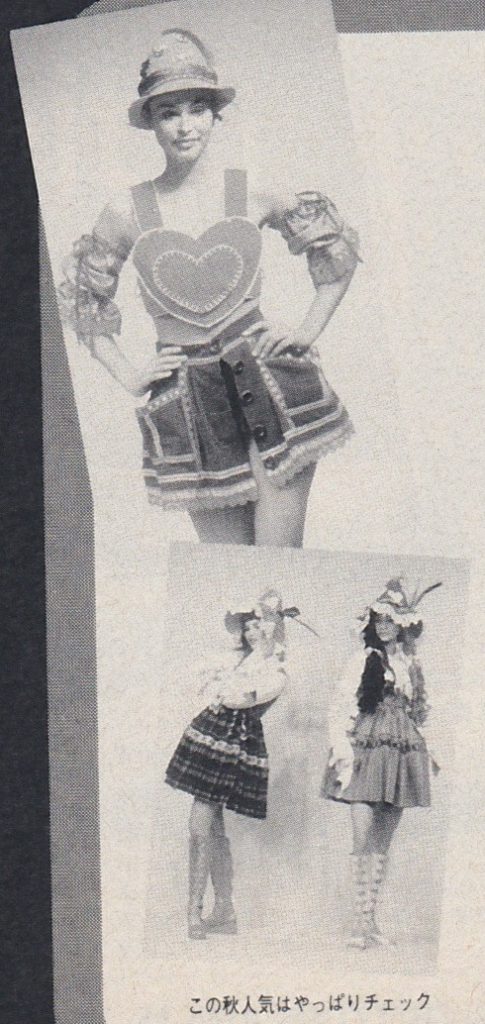
Check is popular this autumn
MILK
プレス酒井さん
Media Relations: Sakai-san
バラエティ鑒富なチエックがおすすめ
We recommend a wide variety of checks (plaids/tartans)
「今ロリータフアツシヨンといわれて いるのは、ミルクがずっとやってきたフ アツシヨンだと思ぅんです。
I think what is now called lolita fashion is the fashion that milk has been making for a long time.
ミルクのコ ンセプトは”少女の夢“。
Milk’s concept is “A girl’s dream”.
かわいいもの、 永遠に少女が好きなものとか、イメージ を大切にしたいと考えています。
I want to cherish that image, the cute things and the things that girls like for a long time.
ロリータファッションも、スタイリン グだけじゃなくて大人になってもいつ までもかわいいと感じる心”みたいなも のじゃないでしょうか。
Lolita fashion is not only stylish, but a lolita also has a feeling in her heart that makes her want to feel cute even when she grows up.
でも、この秋はロリータというよりプレッピー風の方がいいですね。
But this fall it’s more Preppy than Lolita
色でいうと赤やピ ミルクでも定番のタータンチェックなど に加え、今年はさらにチェック柄が充実ンク系。
In terms of colors, in addition to red and tartan check, which are standard for milk, there are more check (plaid) patterns this year.
しています。人気はリバーシブルのシリーズ。 巻きスカートになっていて、表と裏2種類のチェックが楽しめます。」
We are doing another release in the popular reversible series. It’s a wrap skirt, and you can enjoy two different checks prints on the front and back. ”
Analysis and Conclusions
So, that was a lot, and I think, for a lot of people, this is the sort of thing that they don’t want to exist, because they don’t want to believe that there is any connection at all between the novel and the name of the fashion. All I can say is that the above was published in 1994 in Zipper which was a reputable magazine that would have been read by lolita at that time, and that multiple sources I’ve encountered from this period in the 90s seem to draw the same conclusion. The entertainment tabloid 女性セブン (Josei7) also talked about lolita fashion in October of 1994, so it was something that was in pop culture at the time. Cutie Magazine (also popular with lolita at this time), has a feature called the Super Cutie Dictionary in 1995 where they define a bunch of fashion terms and they define the term lolita as “映画”ロリータ”の主人公の名前から,そのフアツションをロリータ・ファツションと言うのだけど,レースやフリルたつぷリのヒラヒラ・フアツションのことだとカン違いしてる人が多いよね。何を参考にしてるのか謎だけど,仮装のような過剰なかわいらしさはあまり似合ってない人が多いのが実情(源)”. (From the name of the main character of the movie “Lolita”, the fashion is called Lolita fashion, but there are many people who think that it is a lace or frilled fluttering fashion. It’s a mystery as to what I’m referring to, but the fact is that many people don’t look good with excessive costume-like cuteness (source).).
So they too reference the book lolita as the origin of the name. In an interview published in Street Mode Book in 2007, Novala Takemoto, talks a little about 1980s lolita, and he says more or less that there was a crash of the style when the DC Brand (character brands, like Hello Kitty) boom ended due to a lot of saturation of really sloppy / low quality stuff that was imitating the girly fashions of the time. So the slight mean girl tone here in Cutie might be a reference to really low quality “girly” fashion from the late 80s, that was very costume-y being uncool. Novala Takemoto actually references a fashion magazine survey at that time where both men and women said the style was something they hated (though he doesn’t name the magazine). The cutie dictionary does have a number of other mean-girl moments as well, so it might be partially forced for comedic effect.
Speaking of the 1980s, multiple books references “ロリータファッション批判” (Critique of Lolita Fashion) in the September 1987 issue of 流行通信 (ryūkō tsūshin), pages 20-21 as the earliest mention of lolita fashion in print.
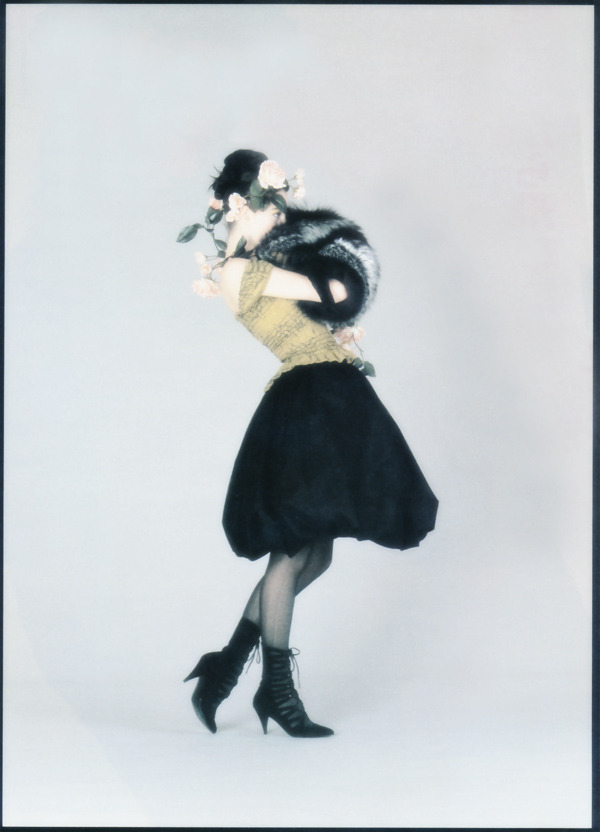
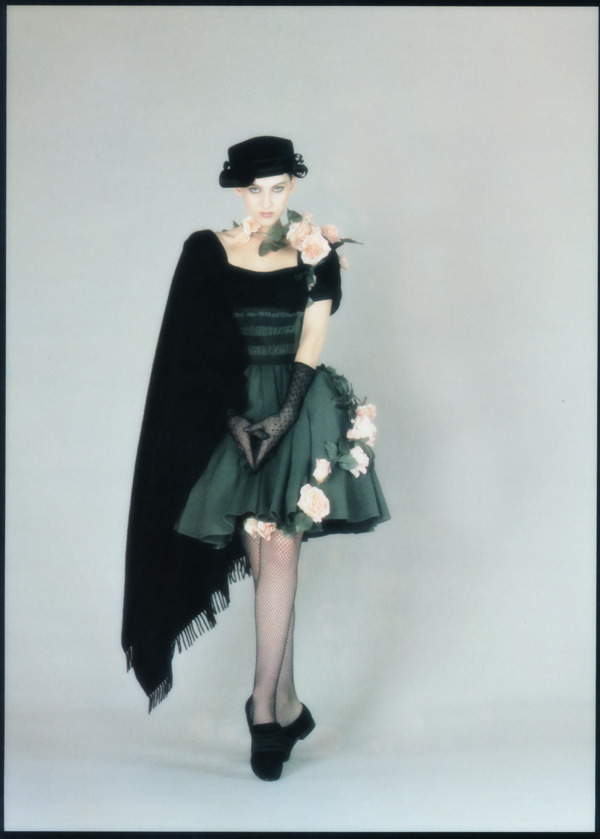
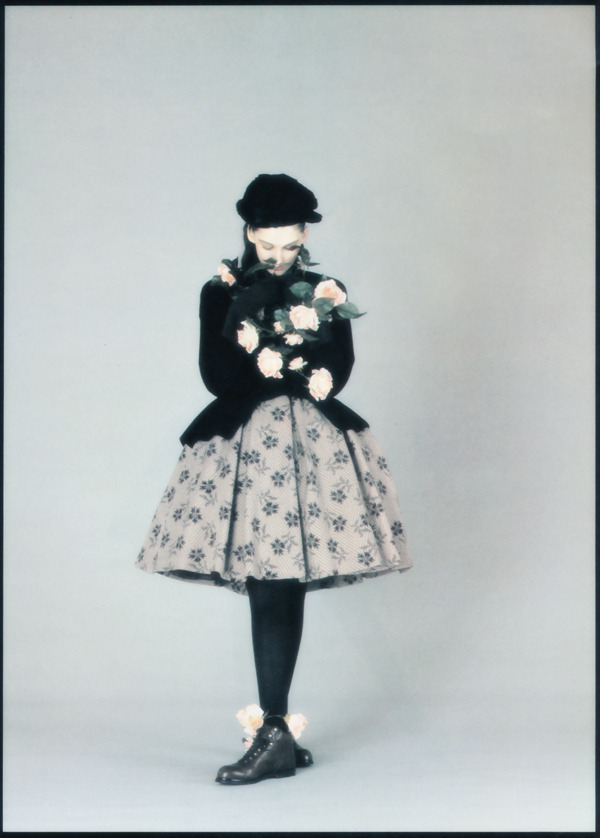
That article is somewhat controversial. It contrasts a “シックでエスプリのある女のコ”(Chic and Witty Girl) to a “ロリータ少女”(Lolita Girl), and basically looks down on girls who don’t dress/act their age, or who aren’t sophisticated enough. You can read my write up on that here: Response to ‘A critique of Lolita Fashion’.
But even if we say there is no relation, there is a pretty big time gap between that 1987 article and the things that pop up in ’93, ’94, ’95. By the time this article was published, there are people in the streetsnap like features who mention they are trying to wear lolita, like the girl on the left in the street snap from Cutie volume 48, October ’93 below.
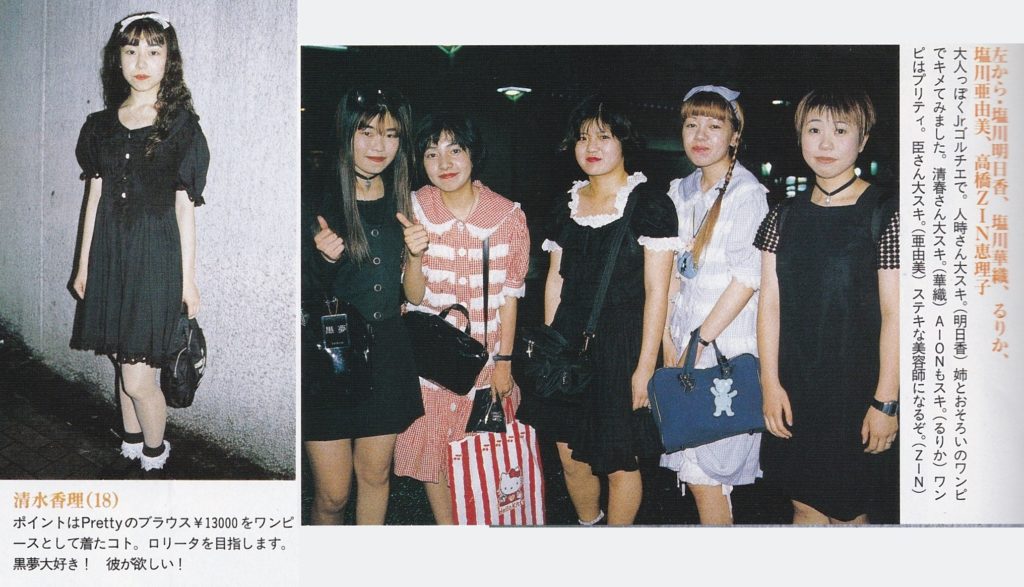
The girls in the group photo to the right are from the same magazine and while they don’t mention trying to wear lolita, the three in the middle certainly match the girl who said she is in style. And this girl below from the January 1994 issue of cutie also mentions lolita.
So, I would say that in 1994 when this was published, there were people using the word lolita to describe what we would consider to be the predecessor to modern lolita fashion. While the 1987 article could perhaps be written off as being unrelated to modern lolita fashion, I think it would be difficult to argue that one should write off this one.
Novala Takemoto has recently published an article suggesting that the name Lolita fashion comes from Agnes b. Lolita in 1984, and disparages PeeWee’s 1996 separate book, The Book of Fashion, for saying that lolita fashion comes from the book. He also suggests that the name lolita was taboo in magazines and thus wasn’t used. Yet, this article predates PeeWee’s The Book of Fashion, as does the Super Cuties Dictionary I mentioned above and both Zipper and Cutie should theoretically “know” something like this if it was common knowledge at the time. It’s possible that multiple popular publications got the origin of the name wrong, but it is kind of strange. It also strikes me as strange that he suggests that the name was too taboo to print, yet I’ve found multiple references to it both before and after 1996. I also bought two books, an old who’s who of fashion from 1996 with a write up about Agnes b and the Agnes b Styliste photo book which is nearly 300 pages. Maybe I’m missing something, but the photos that reference Agenes b. Lolita (and the ones that don’t reference the lolita line) in the 1980s are… boring. Like generic office wear boring. So, I’m personally not convinced, honestly.
By the way, if you haven’t read it yet, I would suggest reading ロリータファッションクロニクル (Lolita Fashion Chronical) #1 by 大石蘭 (Ran Oishi) which also discusses pieces of this article. It’s a Japanese source who is considered knowledgeable/a reputable writer about lolita and Jfashion history, and the article goes into the history of lolita in general. In that article, Ran Oishi writes about the concept of the coquettish French Lolita (the French film stars above) and a bit about how this sort of becomes the lolita we know today. When we look at what was being defined as lolita in the above street snaps, and in things like this 1993 Cutie spread…
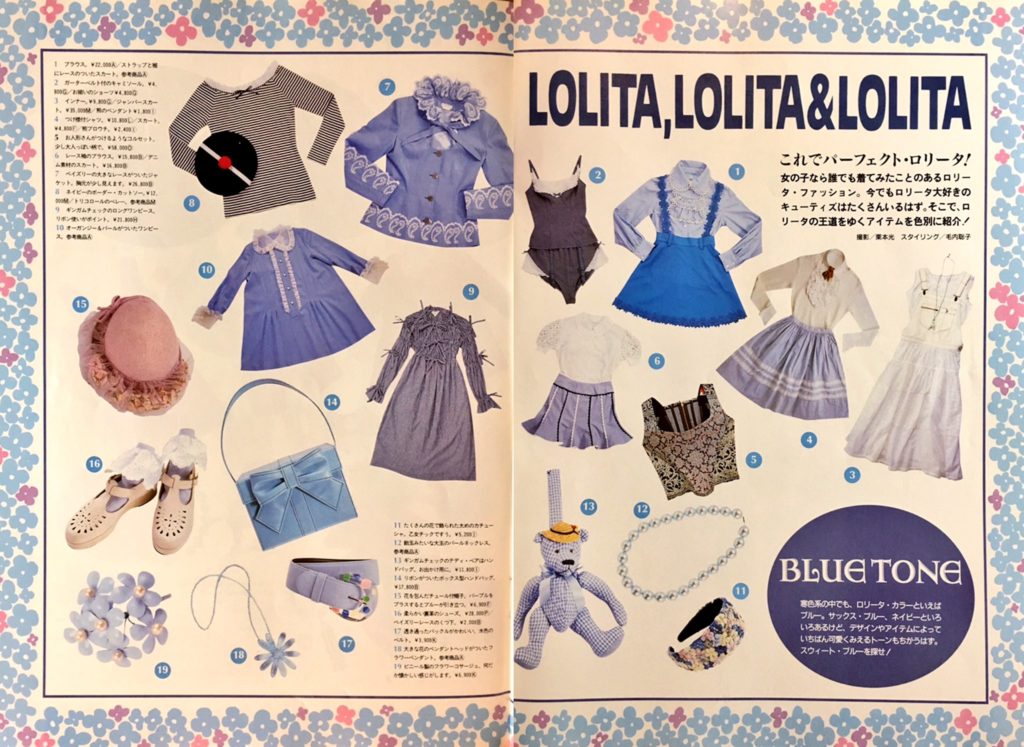
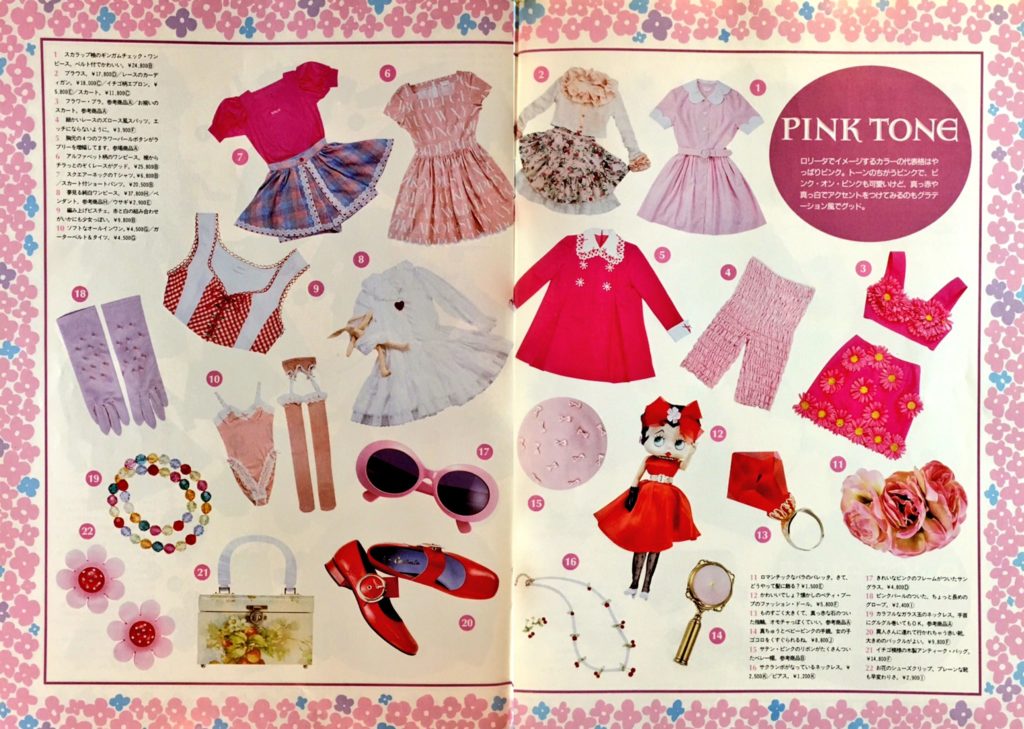
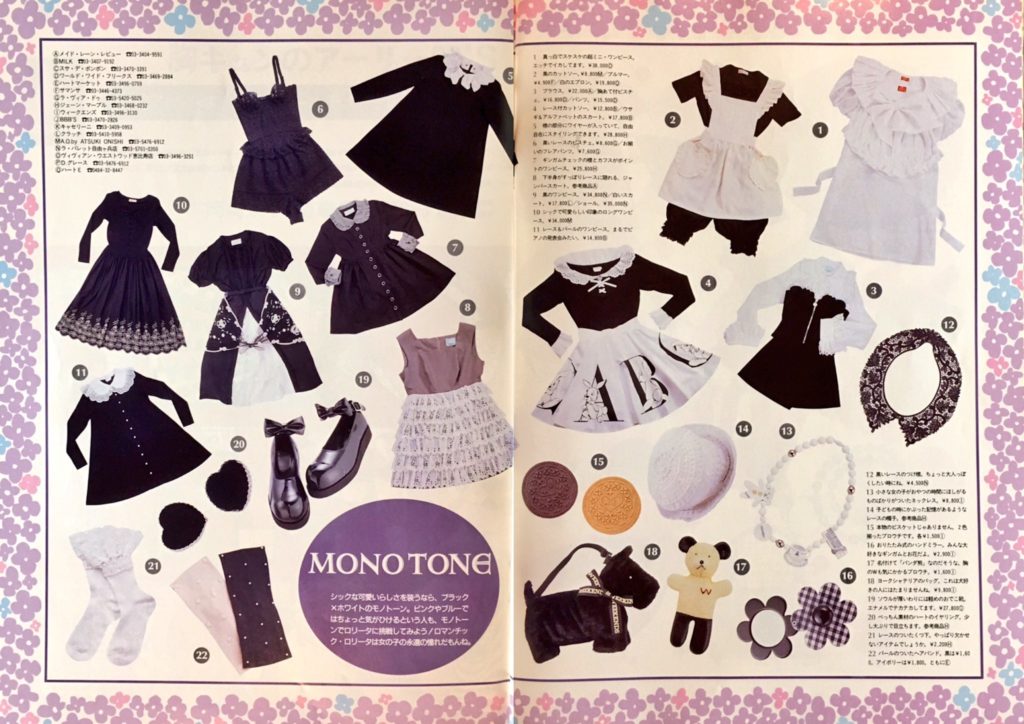
Or we look at Robin-chan who was considered a lolita idol in 1994…



or the lolita idol Aoi Mizuno (水野 あおい) who was also active around 1994….
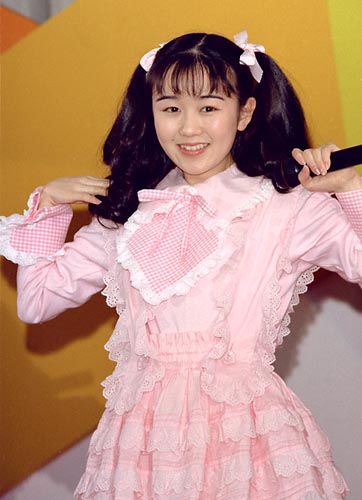
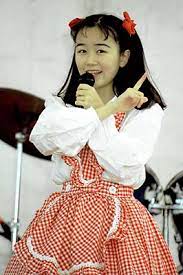
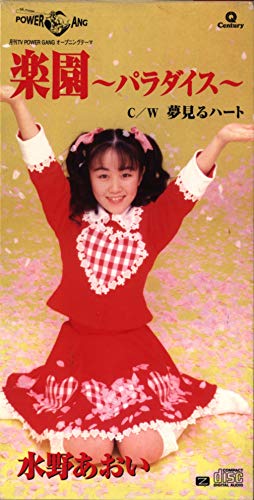
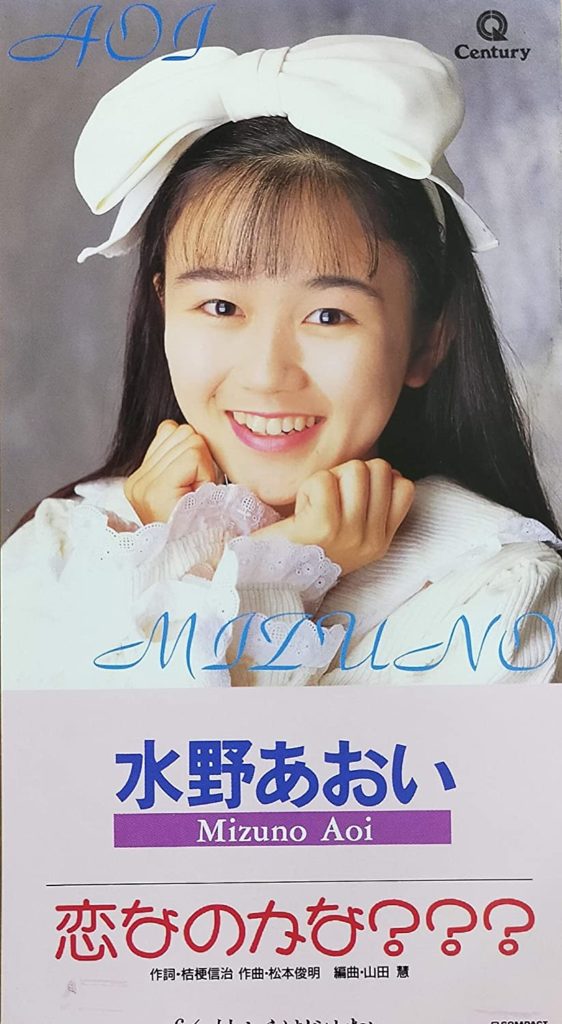
I can definitely see the visual connection between what is considered lolita in Japan in 1994 and what we consider to be lolita today. However, when we look at that cutie spread from 1993, I do also see things that are questionable. There are bathing suits, and crop-top + mini skirt combos that are a lot more the other lolita. (Fun side note, it uses the term sax on the blue page! It also suggests that pink is the most lolita color, with blue being the second best and monochrome is for if you want to try to be a liiitle more chic).
This article we have been looking at is from before the 1997 Film version of Lolita, so the pop culture image of Nabokov’s Lolita at the time would have been the 1962 kubrick film. Which, side note, is called 70’s fashion in the above article???? I pulled a few stills off of the internet that show some of the dresses the actress playing lolita wore (though her costumes also included bikinis and pants+blouse combos).
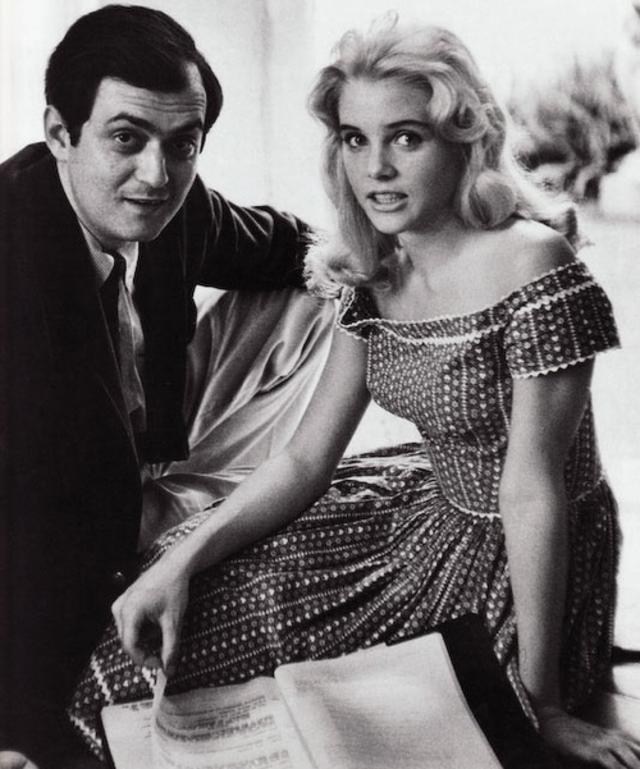
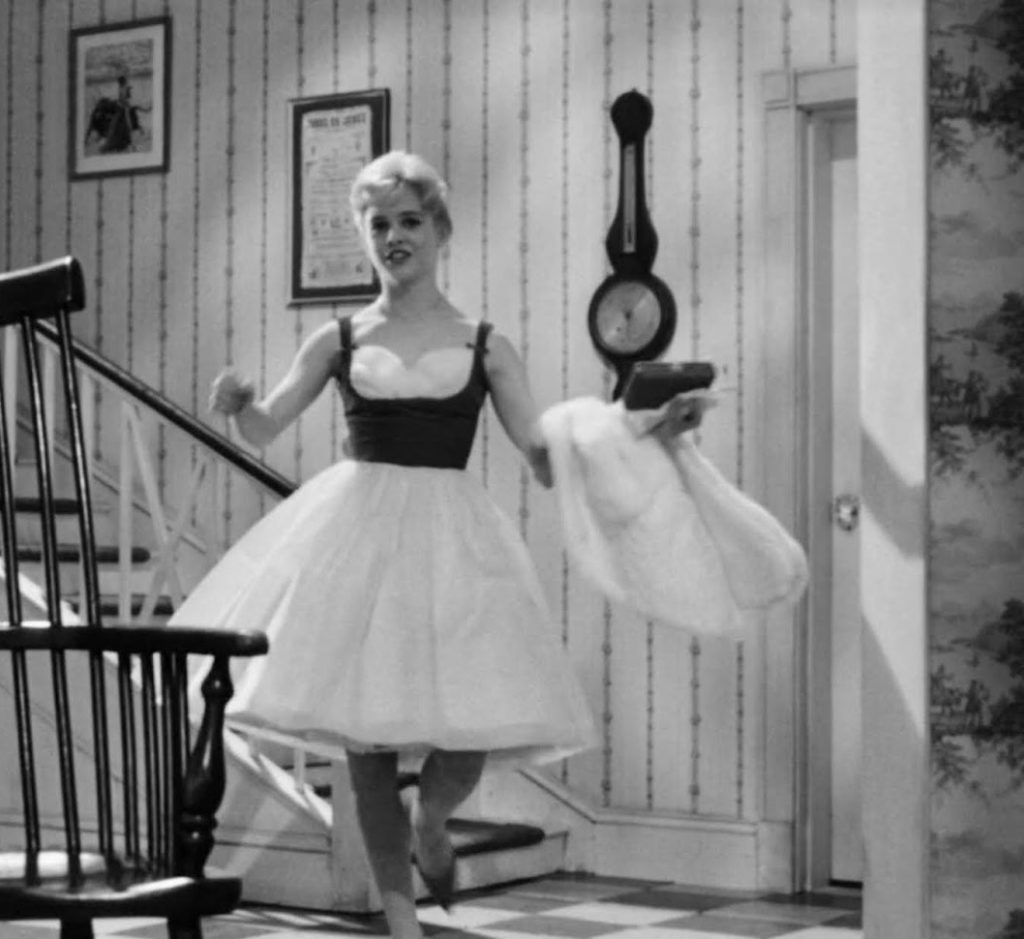
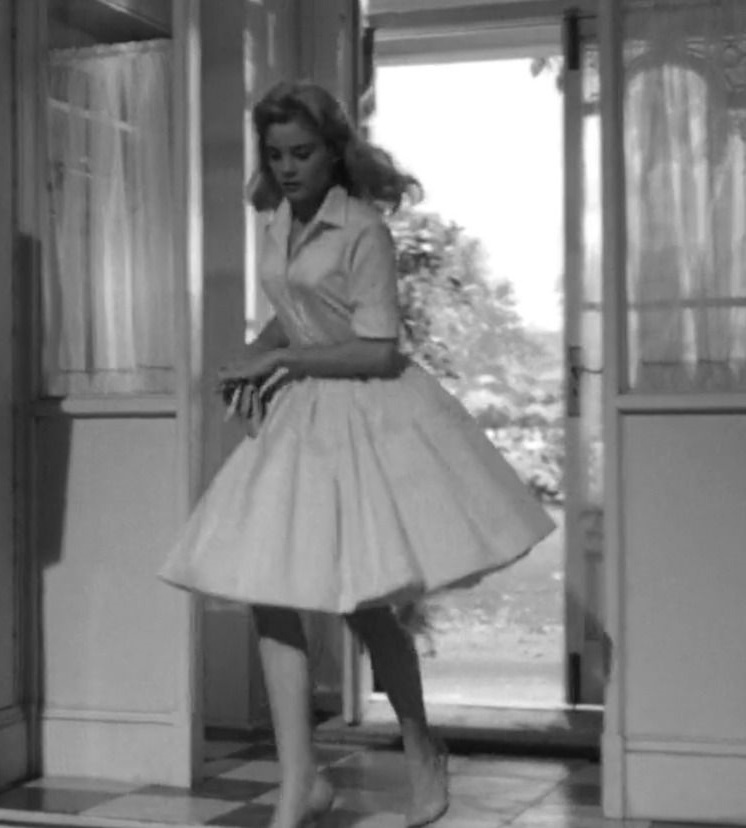
I can maybe see how, if girls were wearing a lot of hyper feminine dresses and the sorts of things in that cutie spread from ’93, how it could be compared to the clothes worn by this actress. But it is a bit of a stretch.
There is an essay by Simone de Beauvoir written in 1959 called The Lolita Syndrome which was written about Brigitte Bardot, that I wasn’t able to get a copy of, but, there was for sure the term lolita being laid on top of these film actresses in the west.
I think the part that really gets lost in cultural translation is the boom of artists like Robin-chan, Aoi Mizuno and Tomoe Shinohara (below) who weren’t young people dressing older, but instead were teenagers embracing the innocentness of childhood and rejecting the “sexy” or “adult” look we saw on western stars.


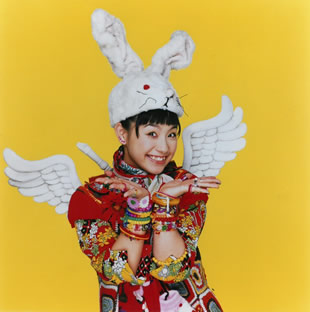
For context, Tomoe Shinohara is two years older than Britney Spears, who at roughly the same age, was being dressed in super short skirts/shorts and crop tops
If Japan had already embraced the concept of “lolita” in film as being female movie stars who weren’t polished and sexy in a traditional western way, I can see how it could have been used as a term for young people who dressed in clothing which wasn’t overtly sexy and had an innocent cuteness, or, in the case of the ryūkō tsūshin article, perhaps a bit as an insult for not complying with the beauty standards of the day.
Regardless of where the name comes from or doesn’t, and what has or hasn’t influenced lolita fashion as a style, I think it’s important to keep in mind that a name that was layered on top of a style likely in the 1980s, doesn’t define the way the people who wear the style interact with it. Many style and subculture names have come to their styles through winding paths, and this seems to be no exception.

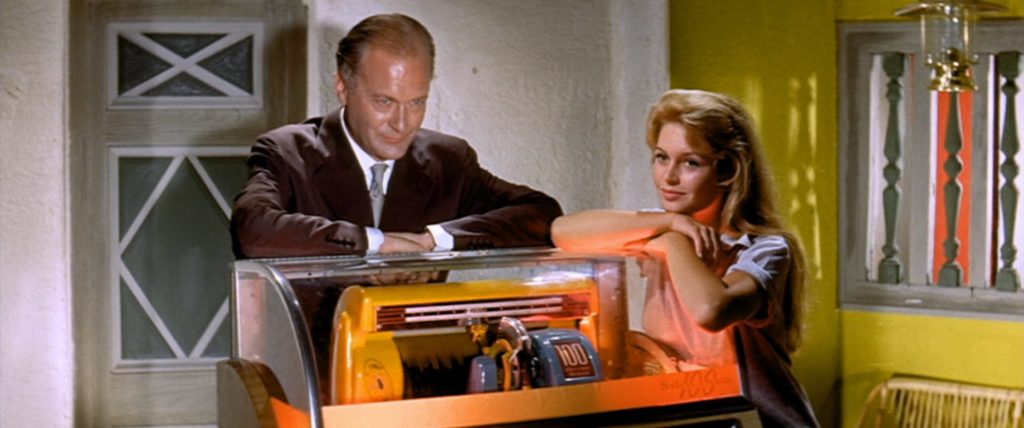
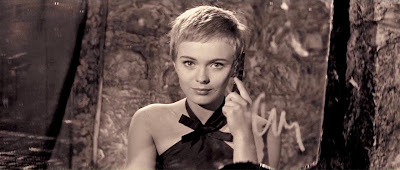
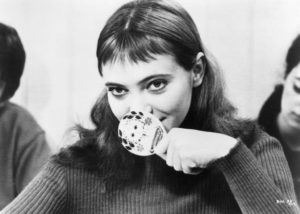
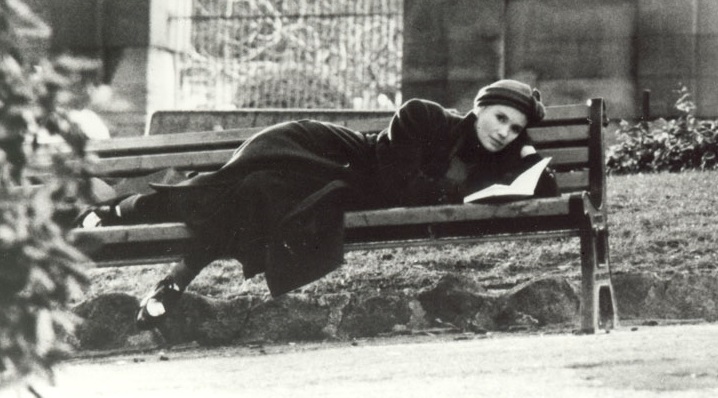
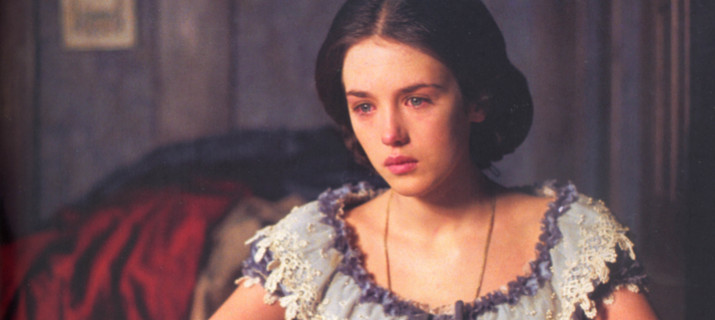
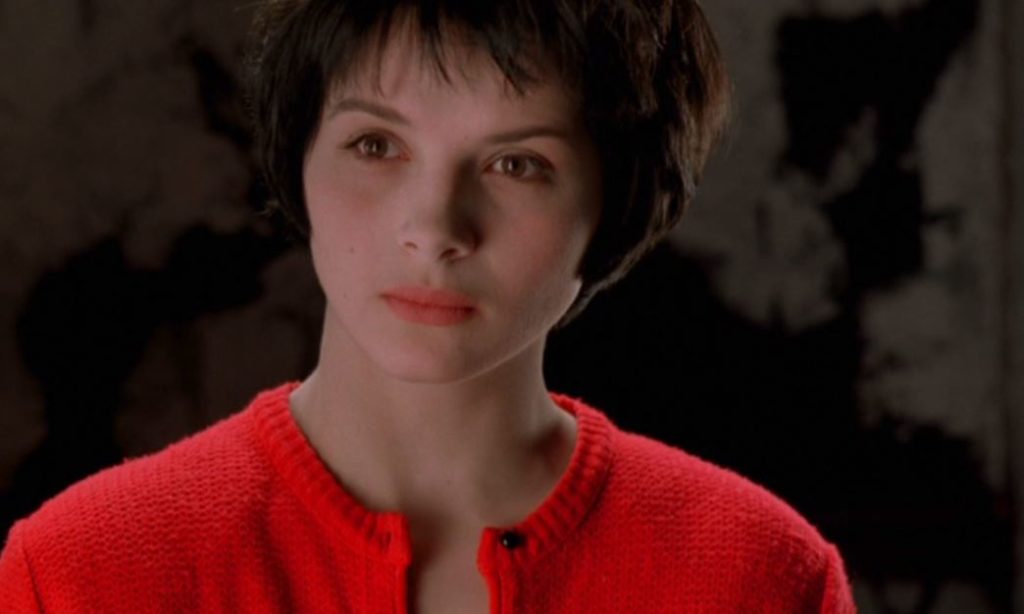
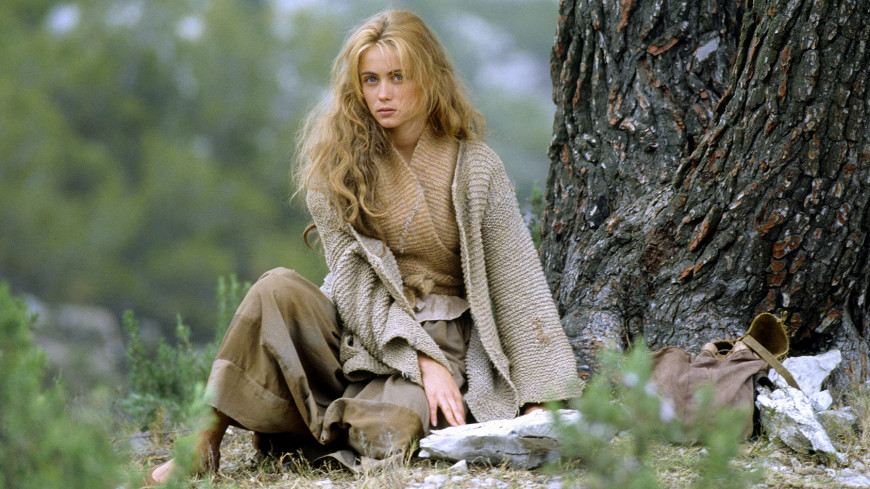
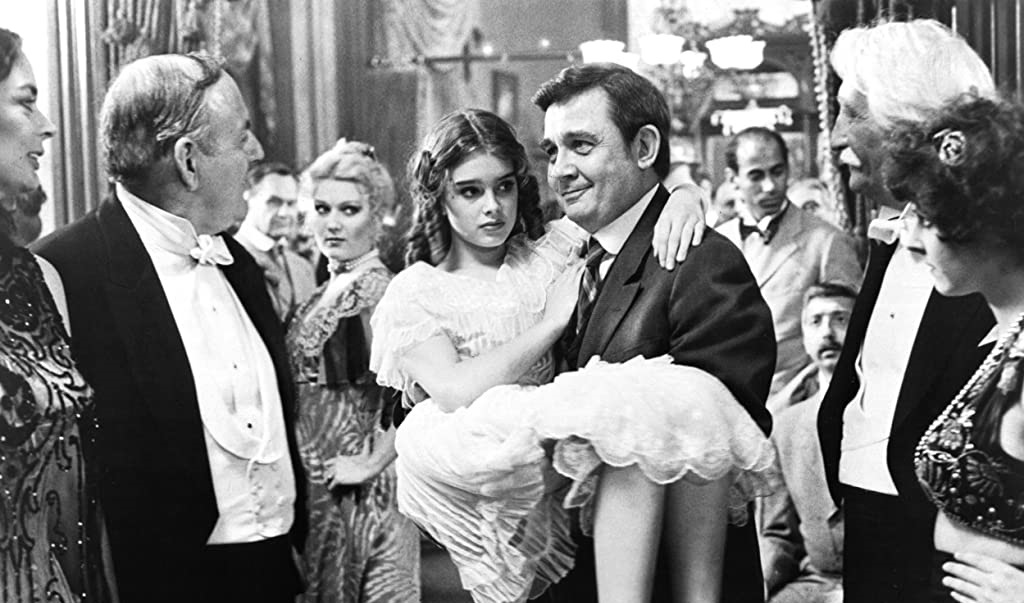
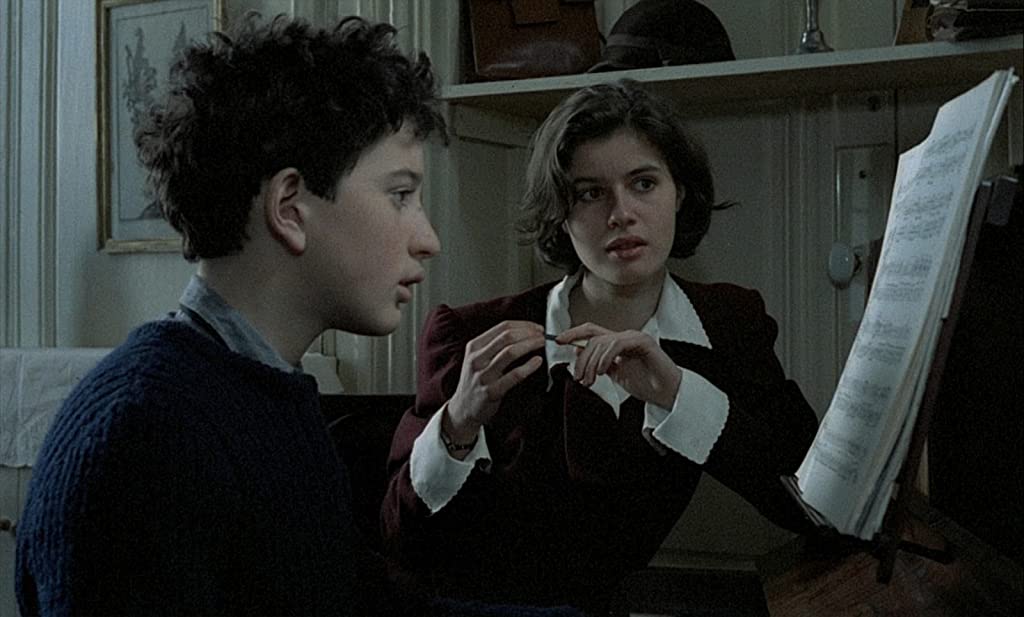
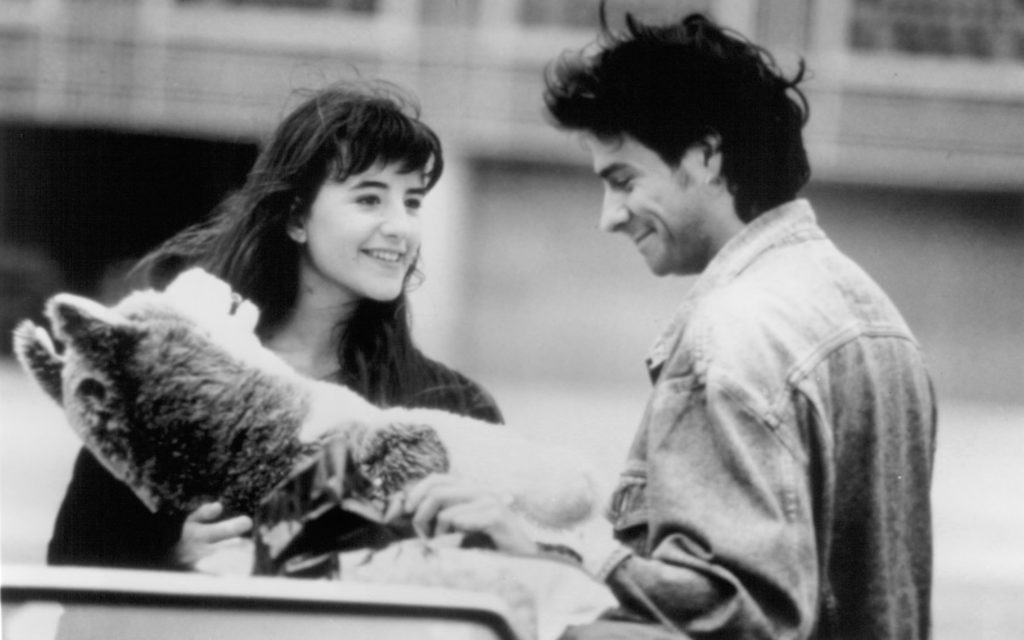
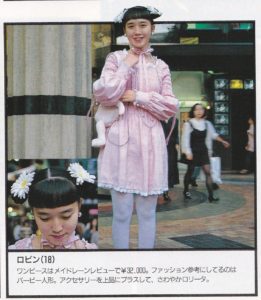
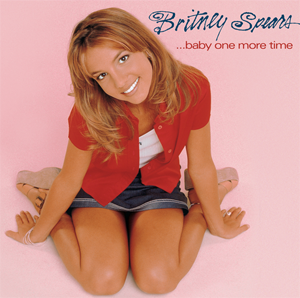
Absolutely fascinating! Thank you for doing these deep dives.
Honestly, thank you for this elaborate article. What’s most painful about this is the mentions of „stubborn feminists“ and women feeling „jealous“ or whatever they said. The 90s truly were a different time and since many things thankfully changed, people don’t want the painful past to reflect badly on them. And that is understandable, but oftentimes it’s uncomfortable when people call Lolita a fashion with feminist origin or claim the term Lolita came from a totally different context. It’s just revisionism and I feel like we should be aware of the uncomfortable truth of the past while also acknowledging that it doesn’t reflect what the fashion became now. It’s detached from the context of sexualization because we (the people wearing the fashion) are in love with the dreamy, vintage, romantic and whimsical feeling the fashion gives us and we have no interest in a weird fetishization of prepubescent girls. Maybe this is also why in Japan Lolita fashion and terms like lolicon can exist at the same time, while talking about entirely different things. Lolita fashion is what it is because it’s historically been dominated by women, i like to think about punk in the 70s being the true origin of this fashion and according to the article that might not even be wrong. Punk at the base for rejecting conformity, young girls rejecting of „mature sexy looks“, vintage clothing…. Yeah that pretty much checks out. Is it too late to change the fashion name? Yeah, pretty much because people decided that it shouldn’t be changed so now we just have to live with this name and explain it every time lol
woah, thanks so much for this post ♥ very interesting read.
do you mind if I translate it to portuguese? (I’m brazilian) of course I will credit it.
Sure, I don’t mind. Please feel free.
I’m enjoying your articles about 80s and 90s lolita a lot. It’s interesting that Zipper implies it’s trend hopping young girls who enjoy lolita; these days it has a reputation as what weird nerds wear.
there’s also a strong contrast between innocence and the male gaze with early lolita. The article implies that *because* French lolita are innocent and free-spirited, they are attractive to men. As the style moved further and further away from modern/conventional clothing (the style shown in early cutie spreads), it probably became less attractive to men.
Finally, Robin-chan and Aoi Mizuno are super cute ~
On the topic of the book, I have read in multiple japanese articles that it is considered feminist in Japan because of something along the lines of “for once a girl seduces an old man and not the other way around”, which makes me wonder if the japanese version of the book doesn’t make it obvious that the book is told from the perspective of an unreliable narrator due to translation issues.